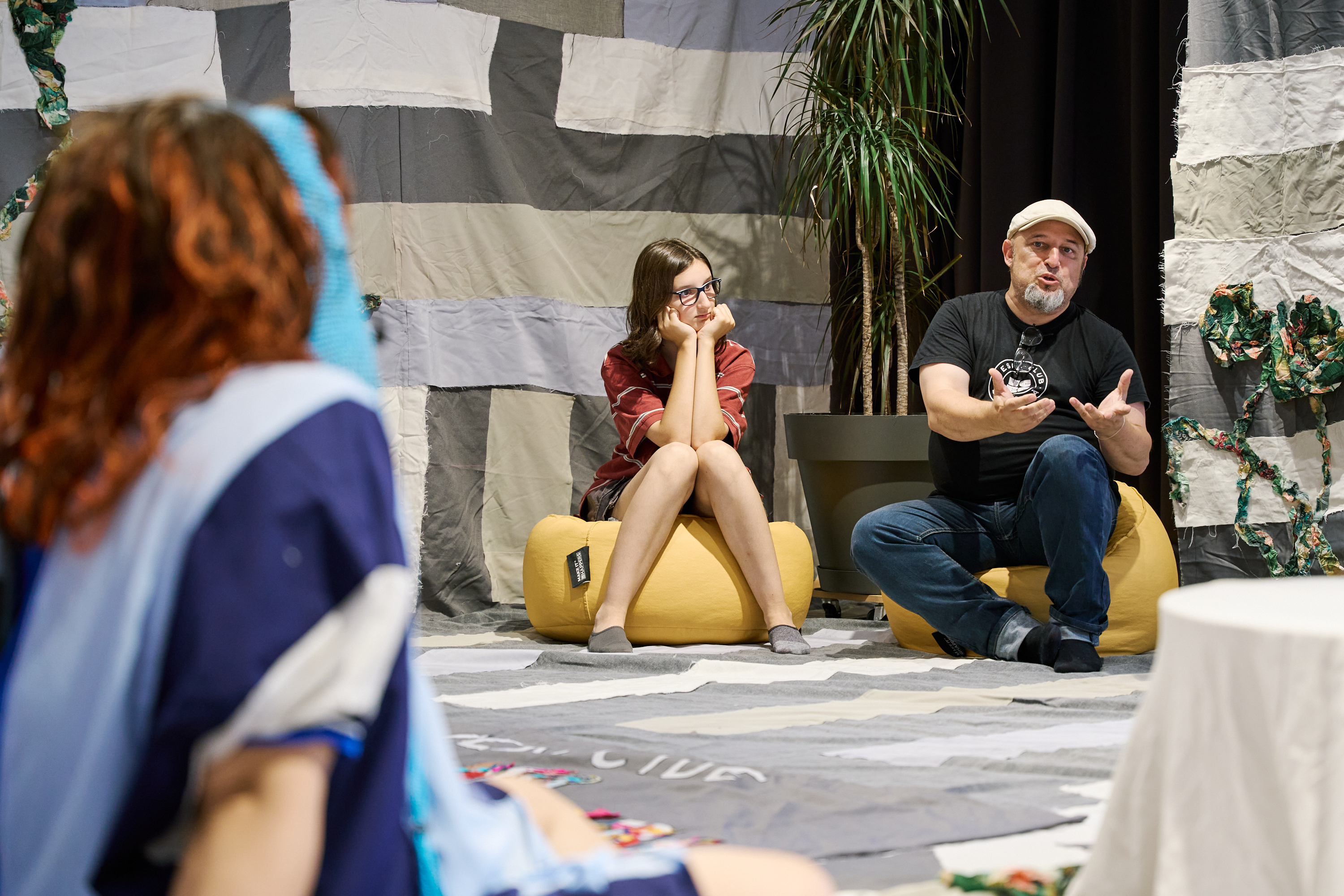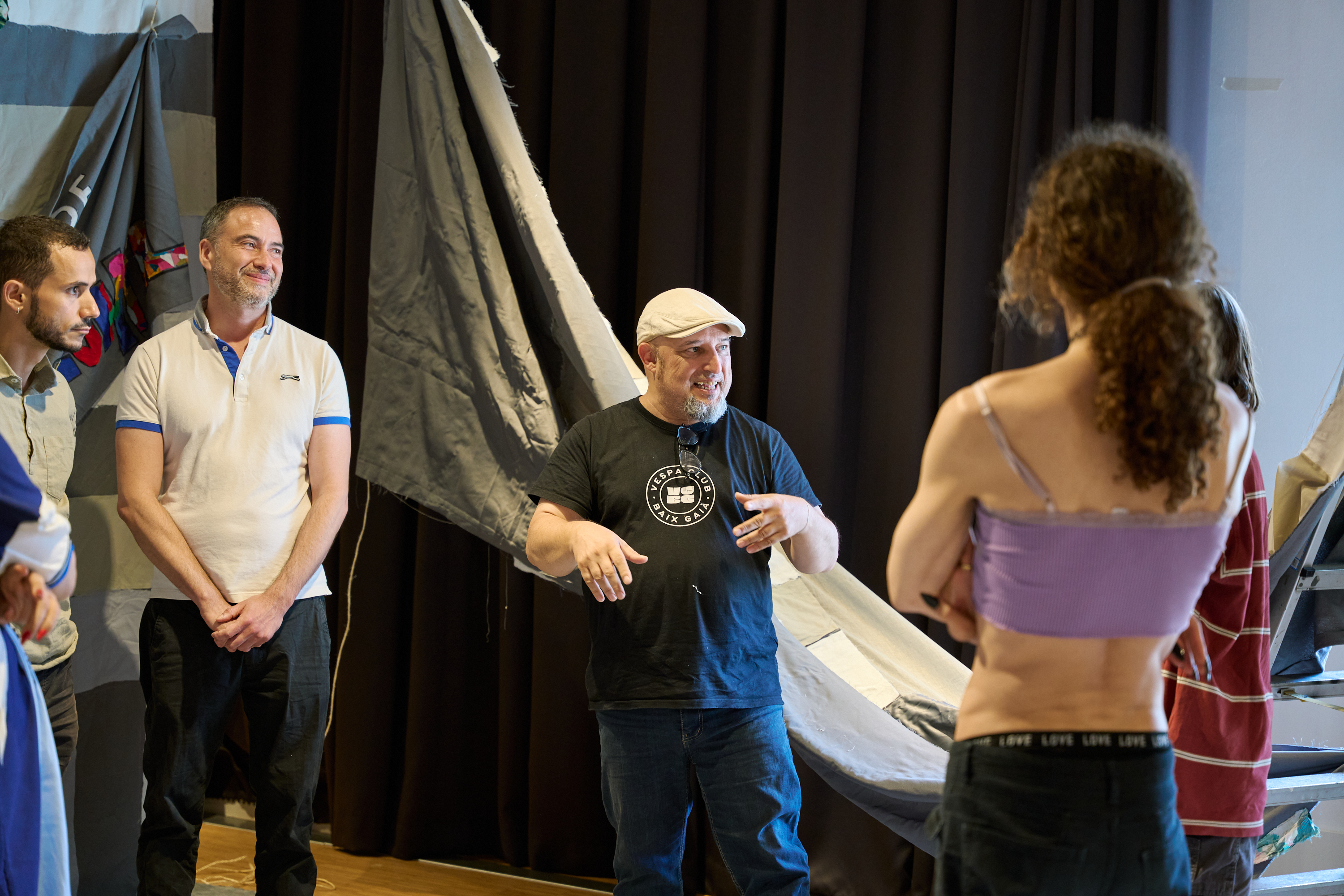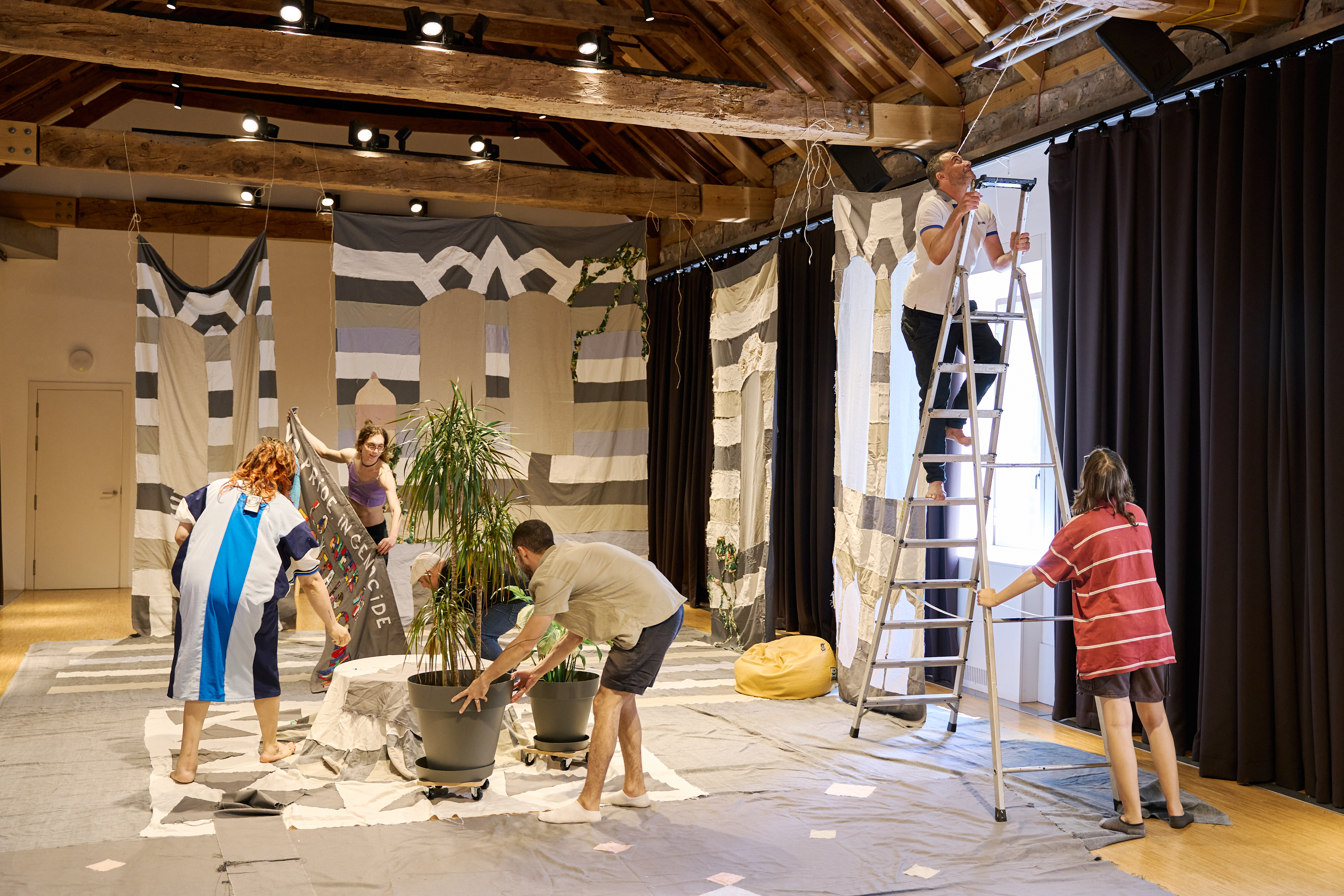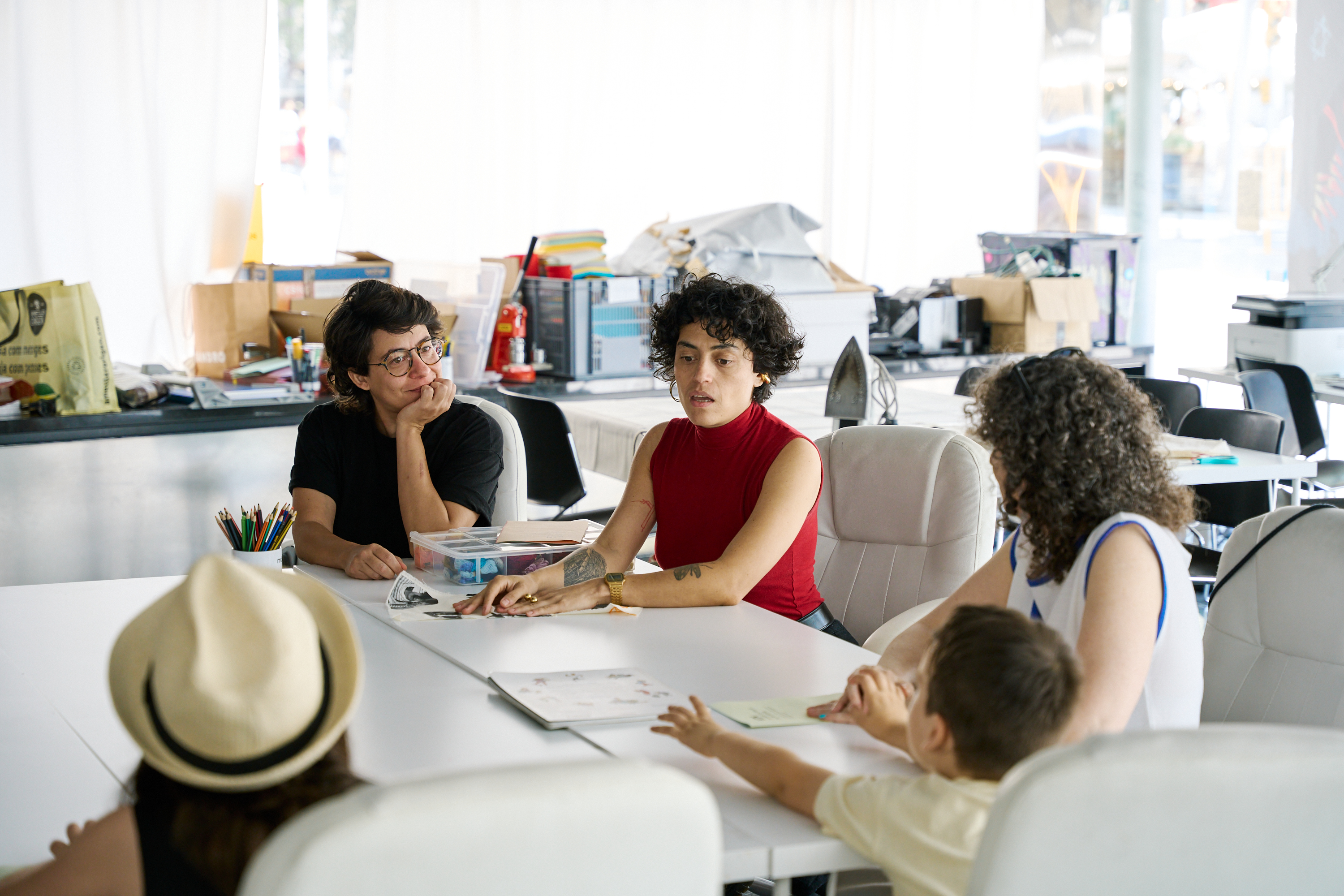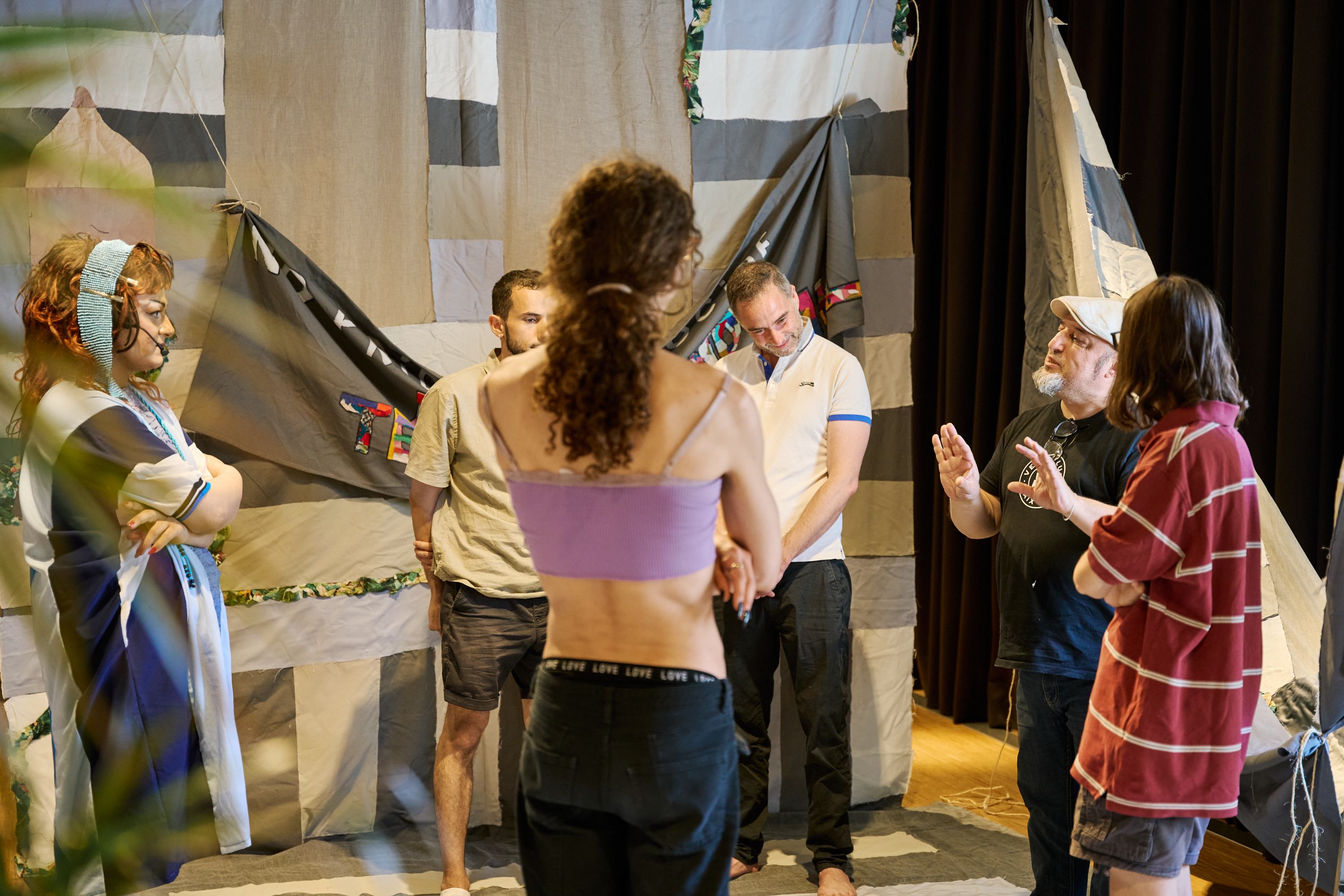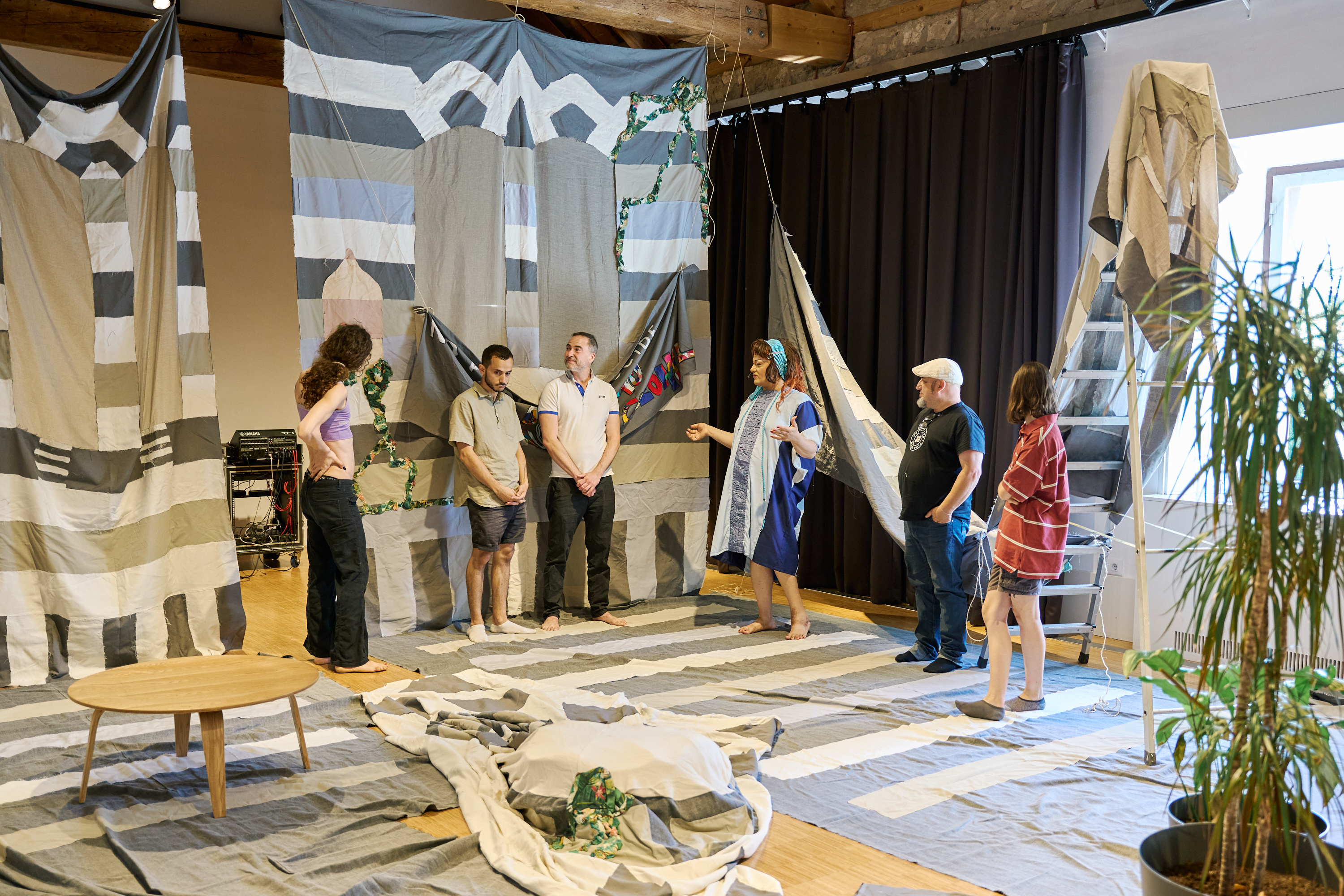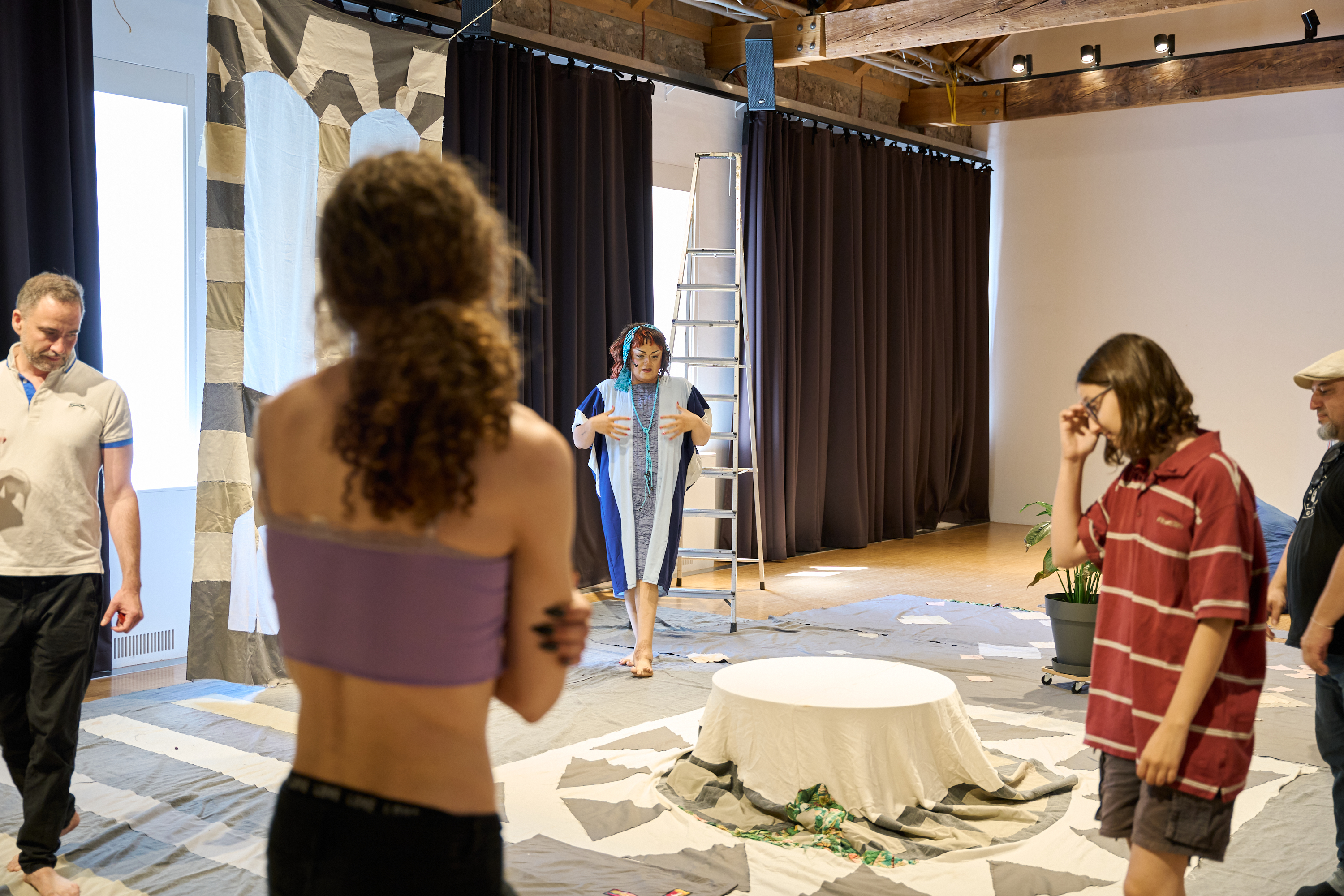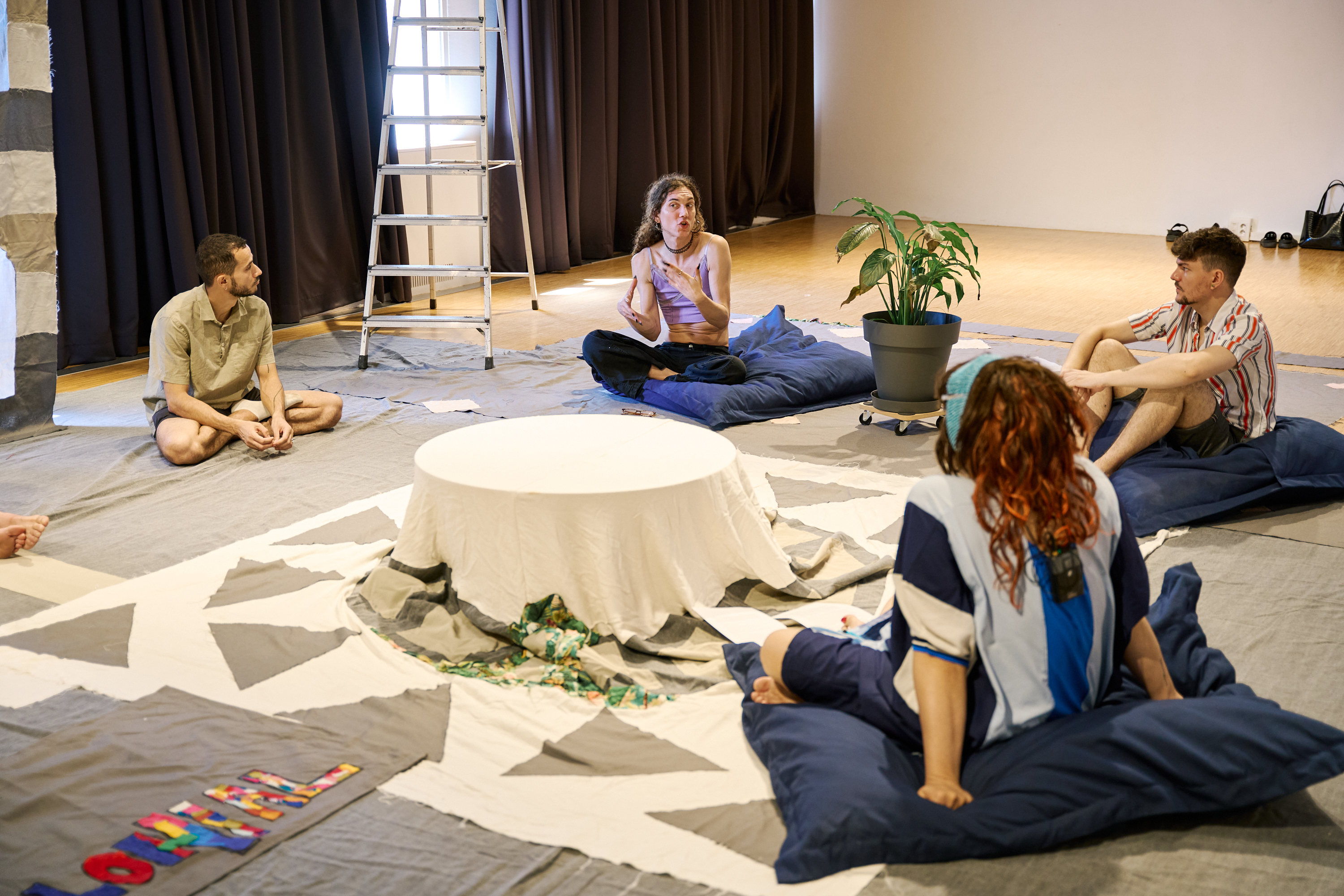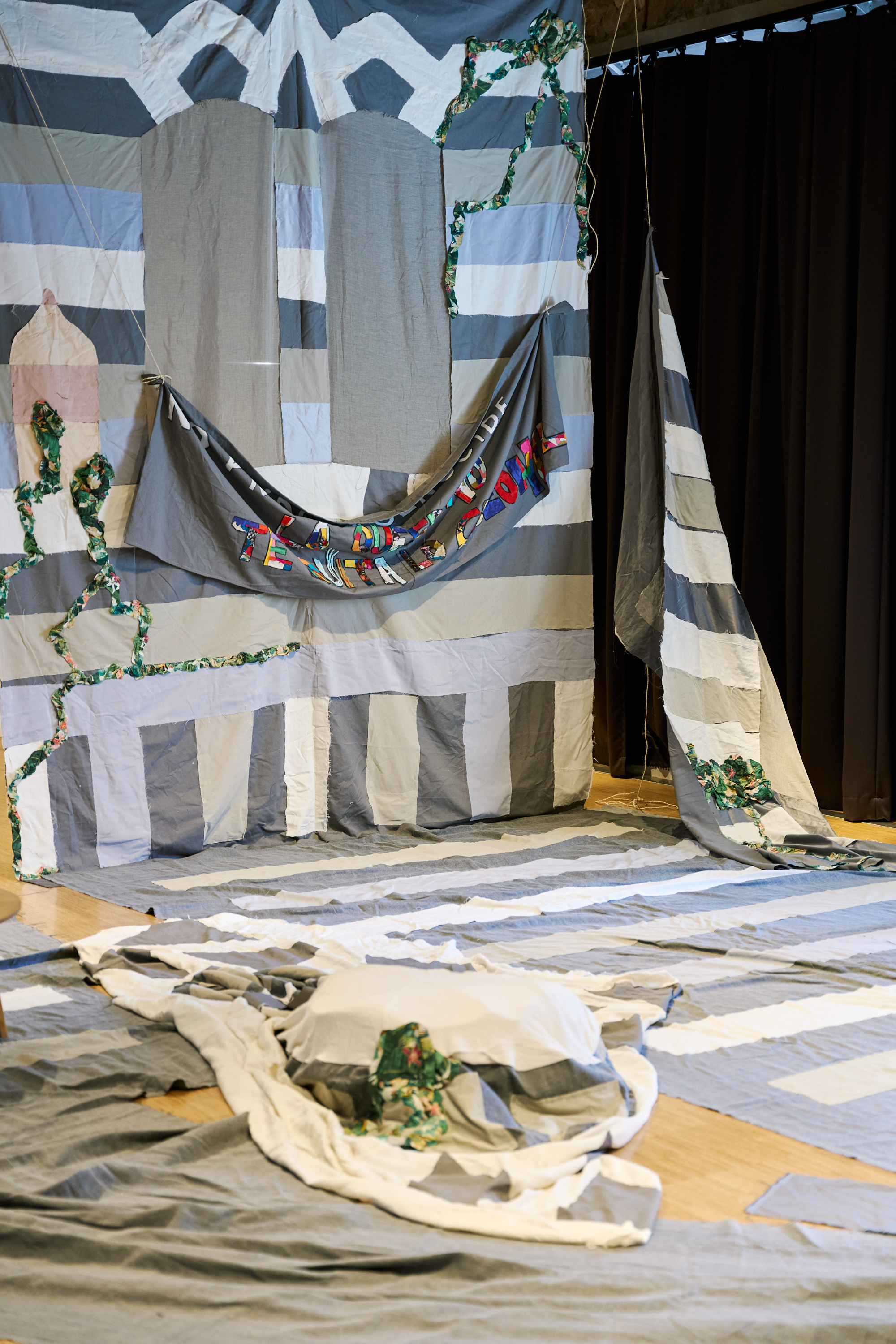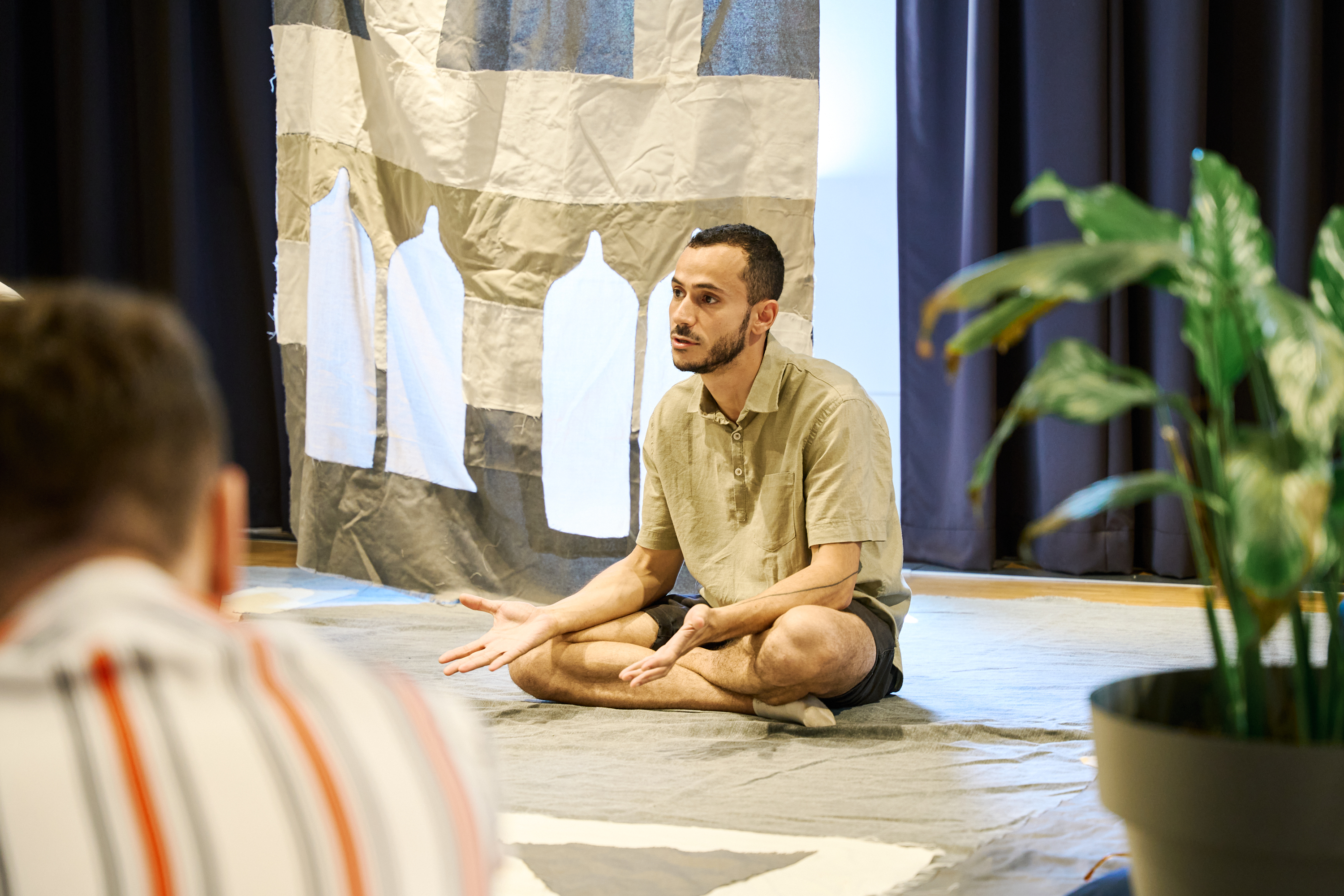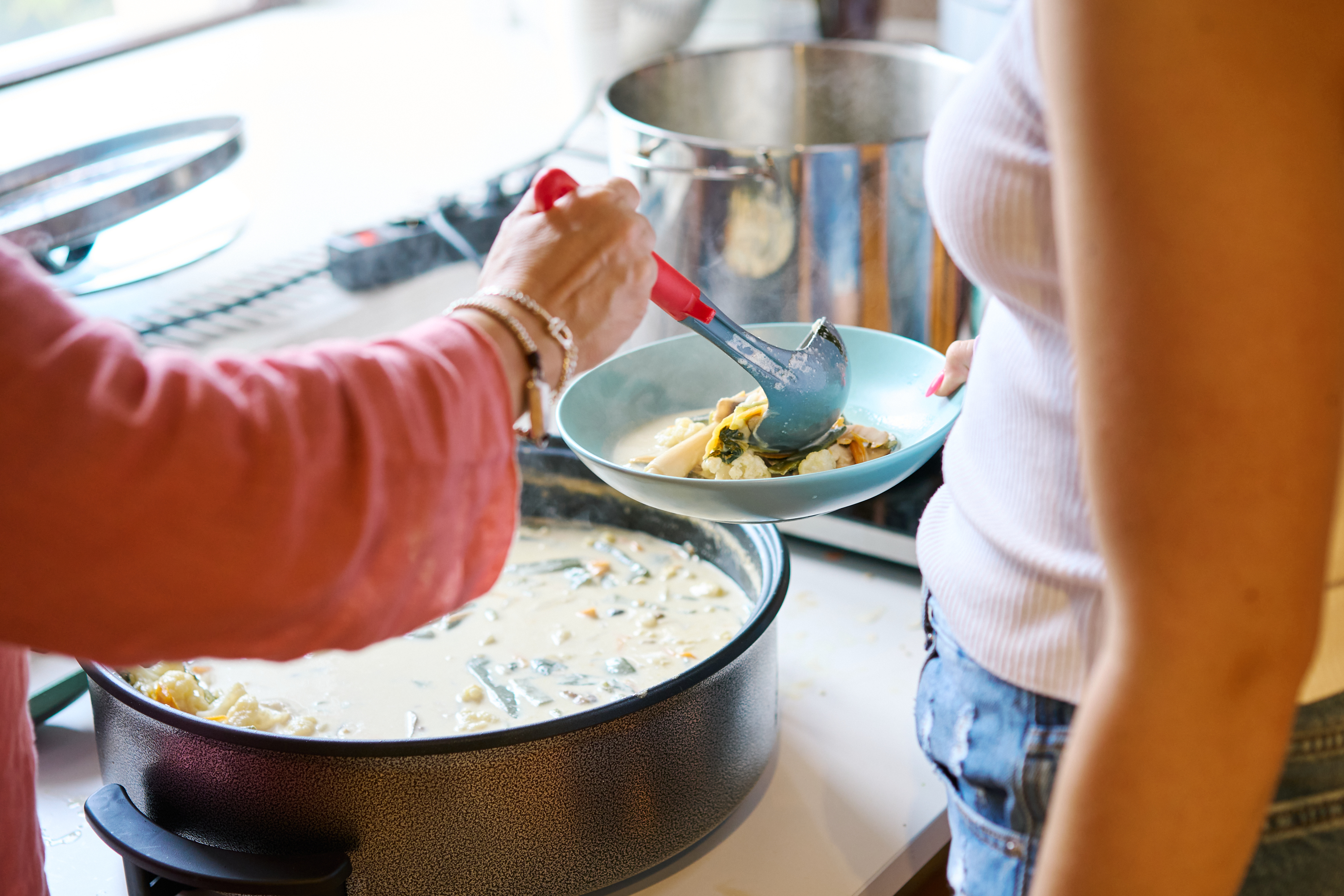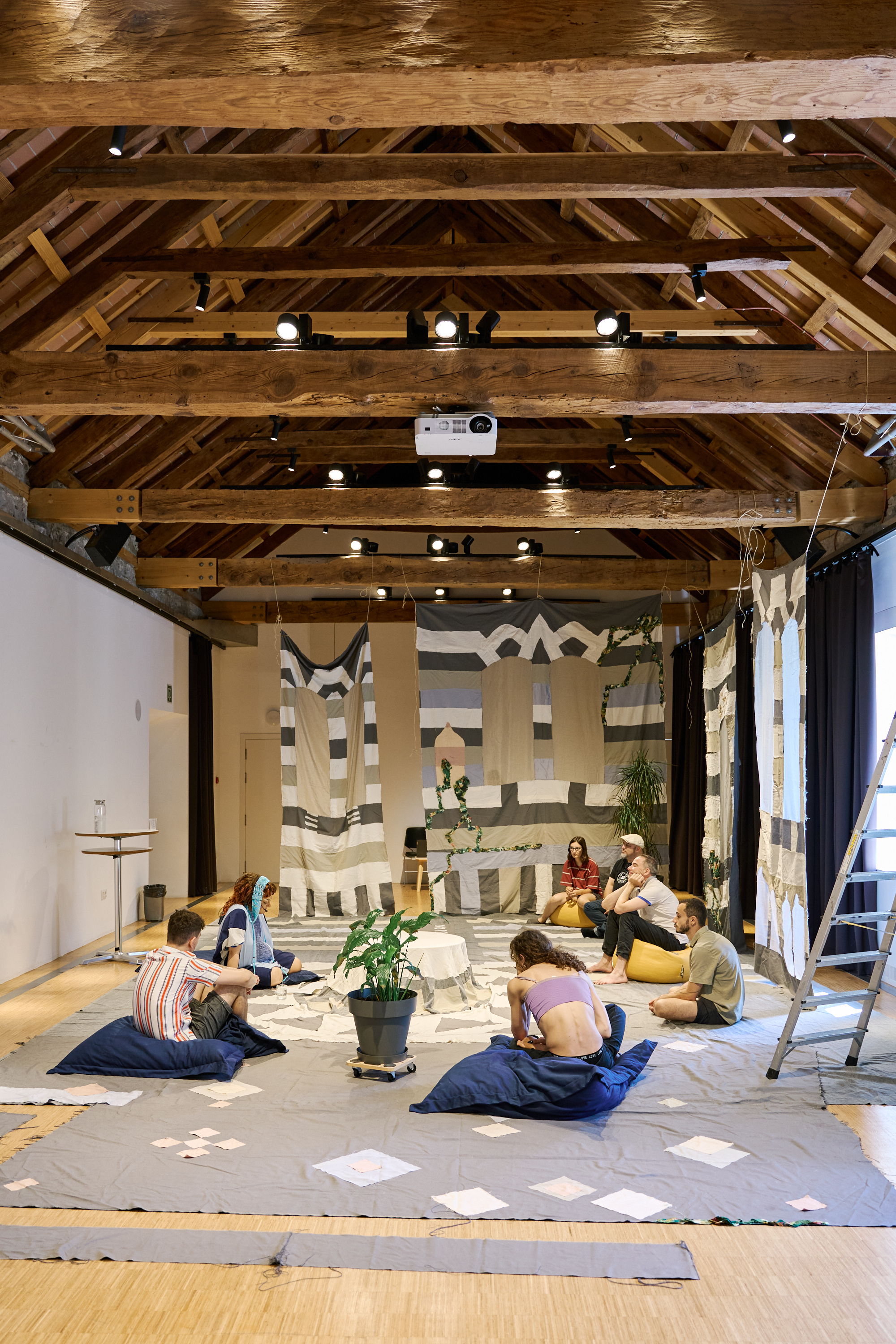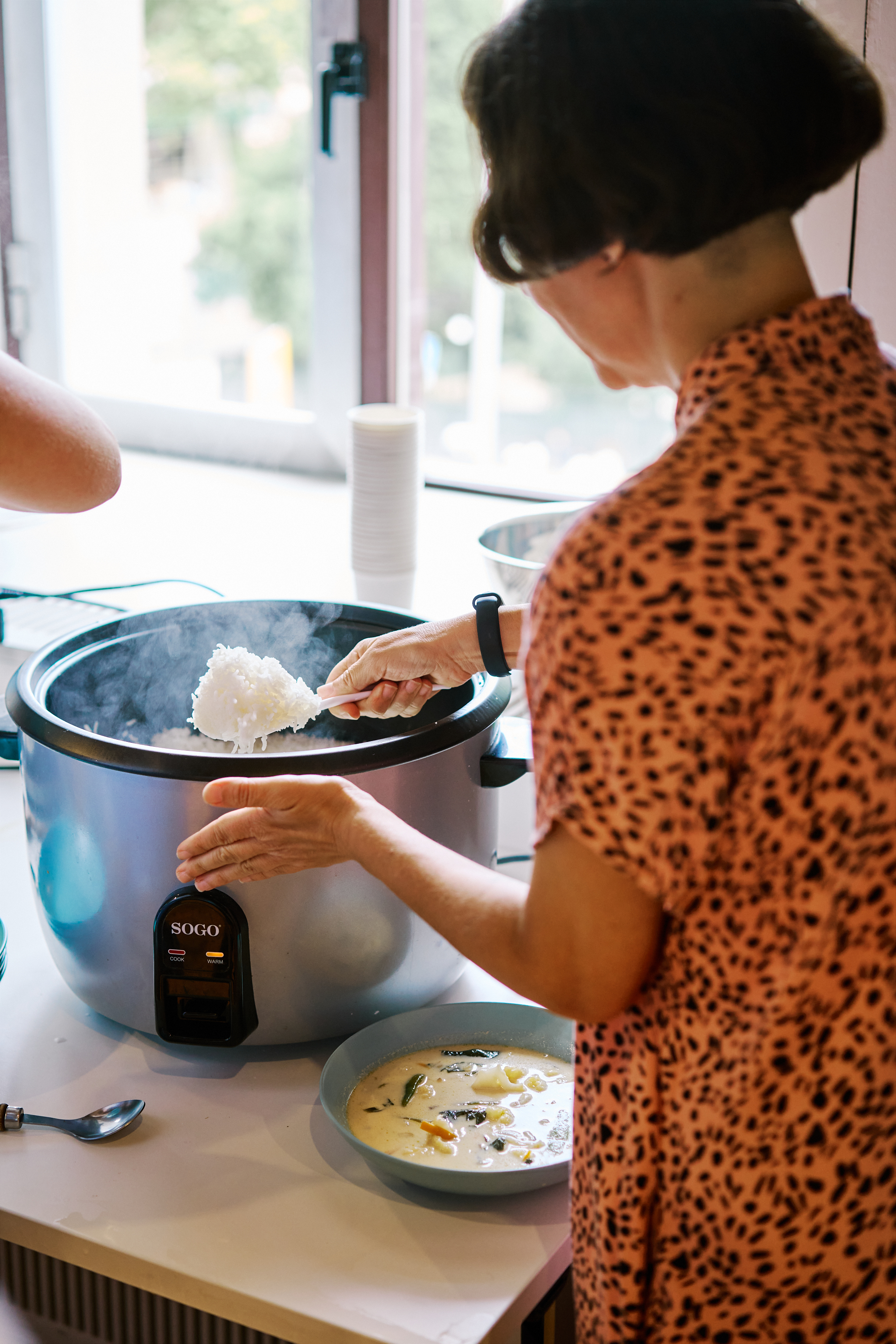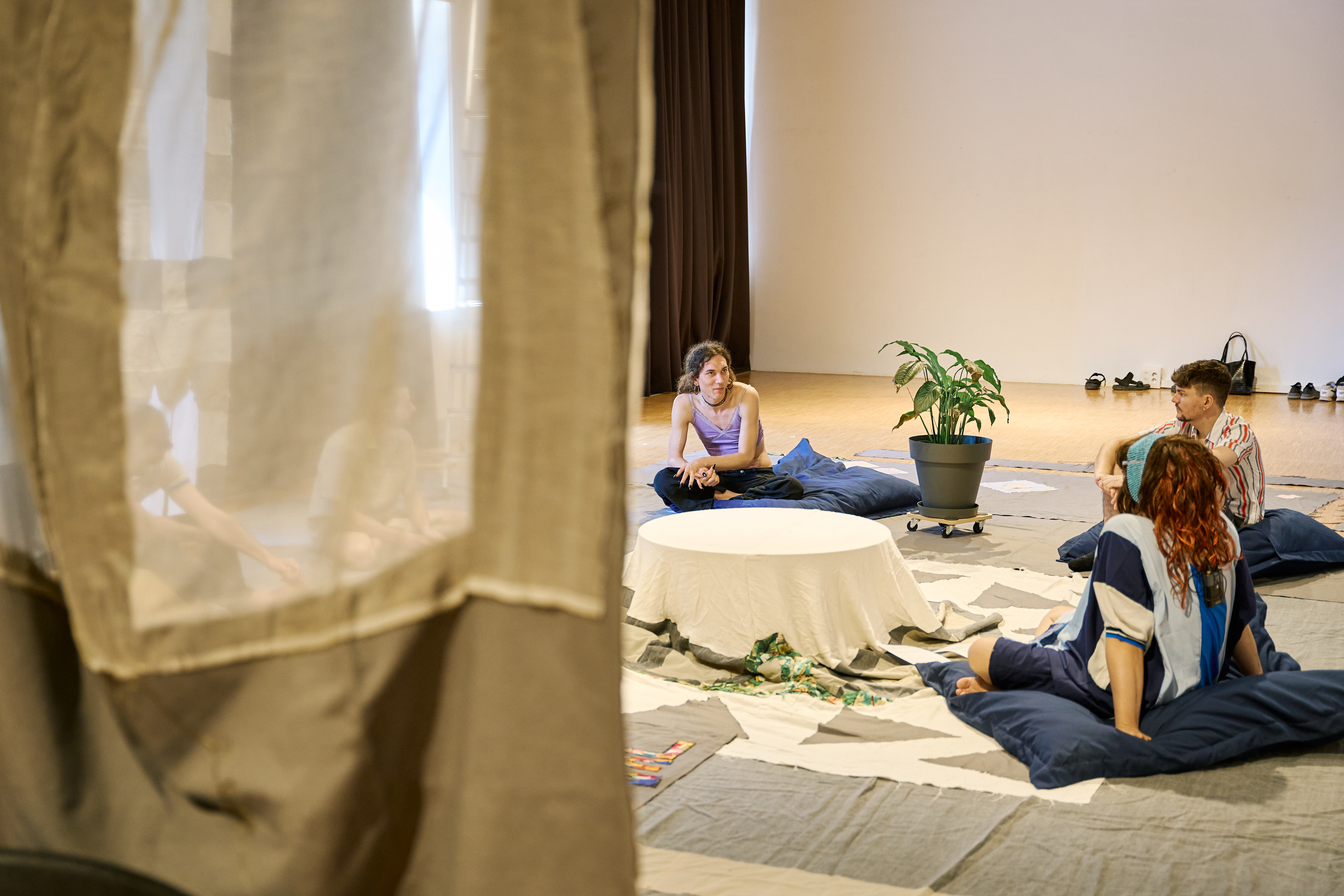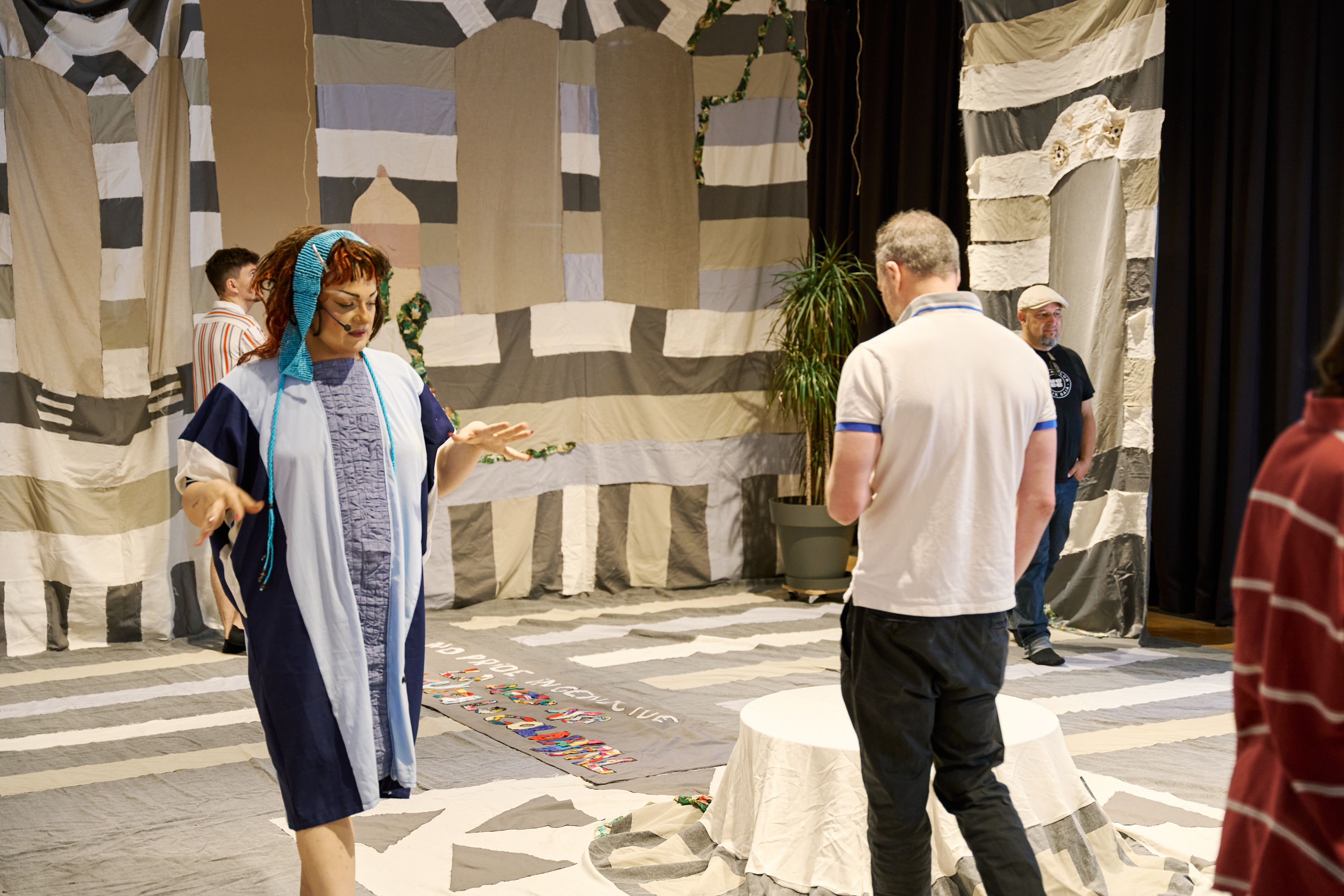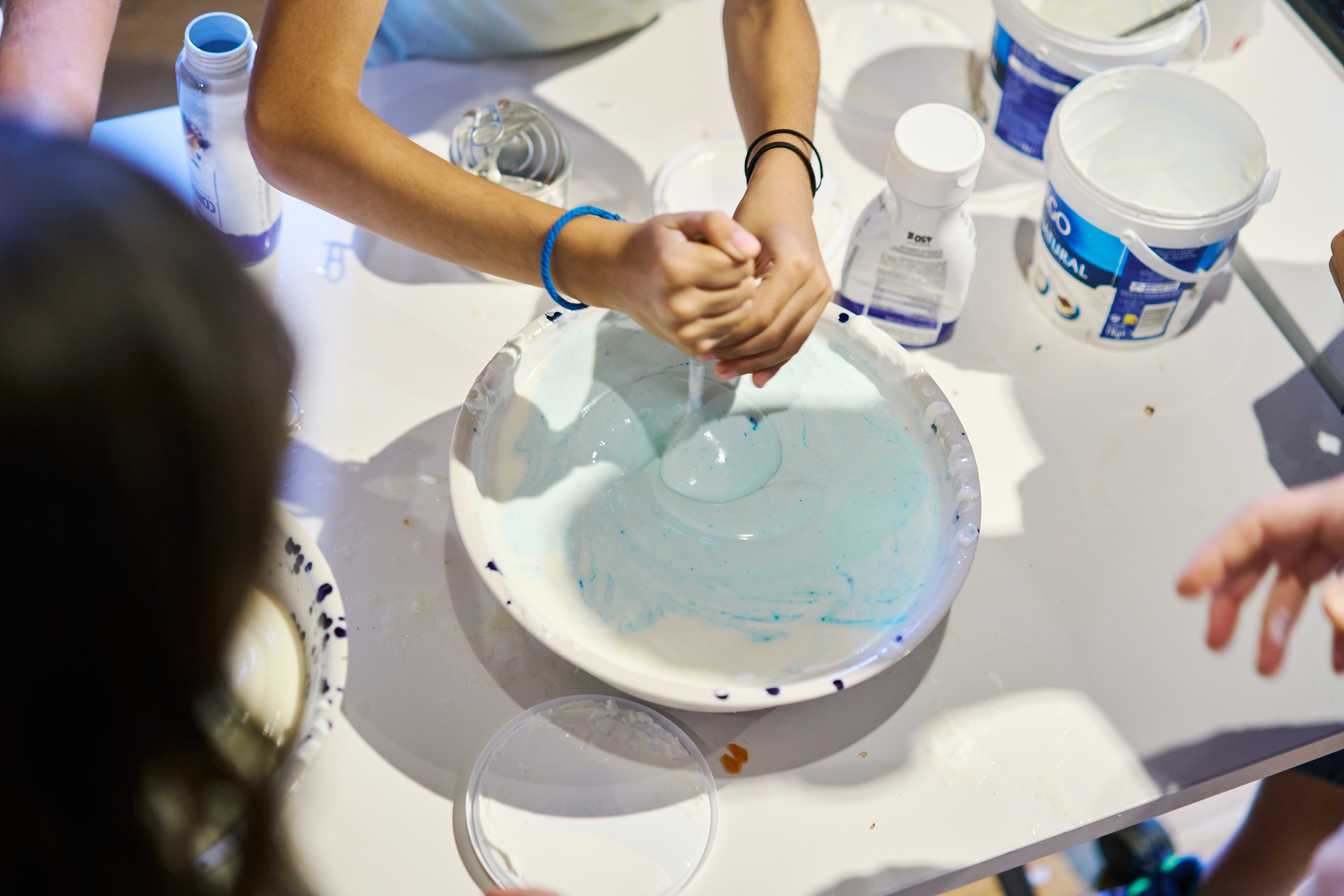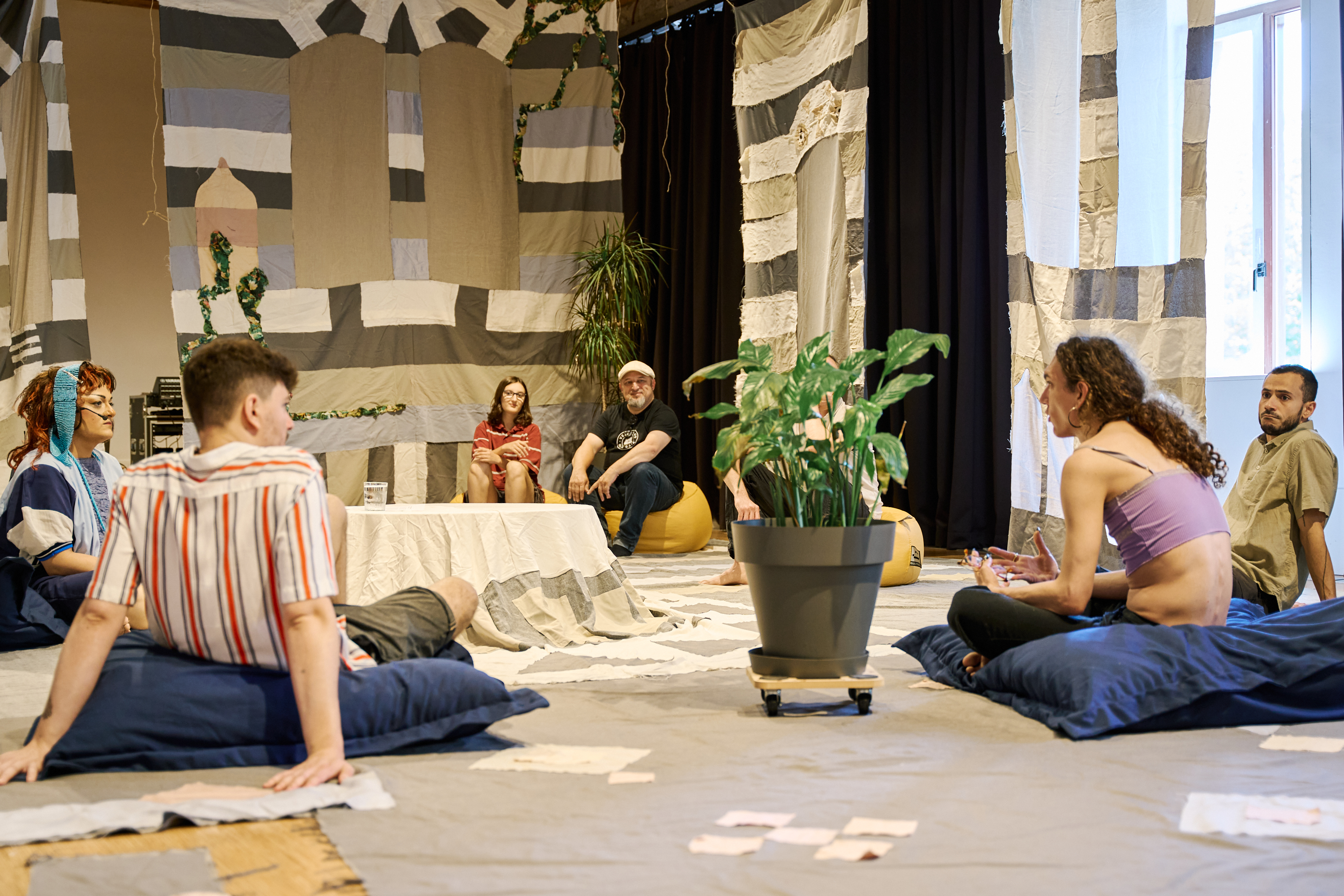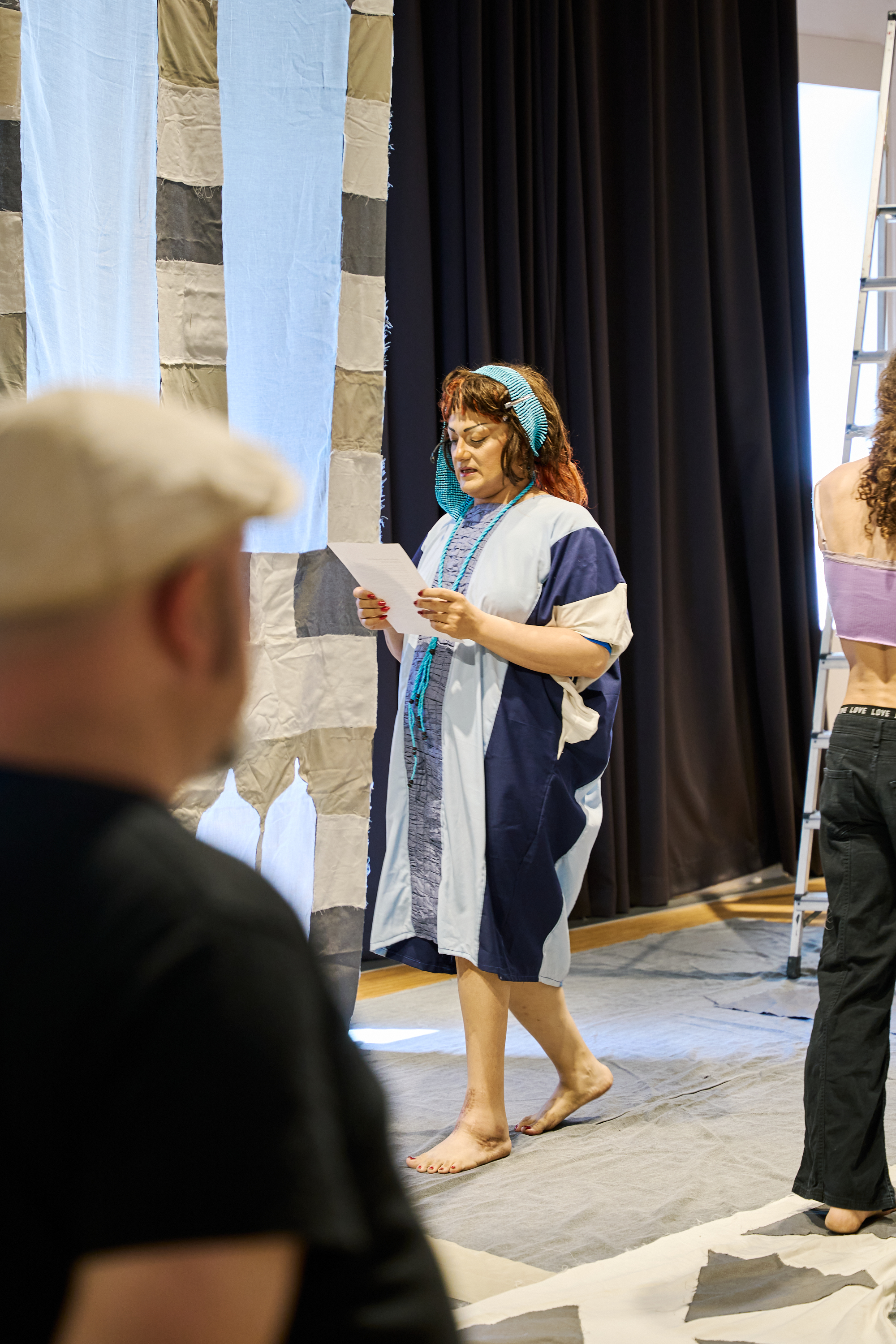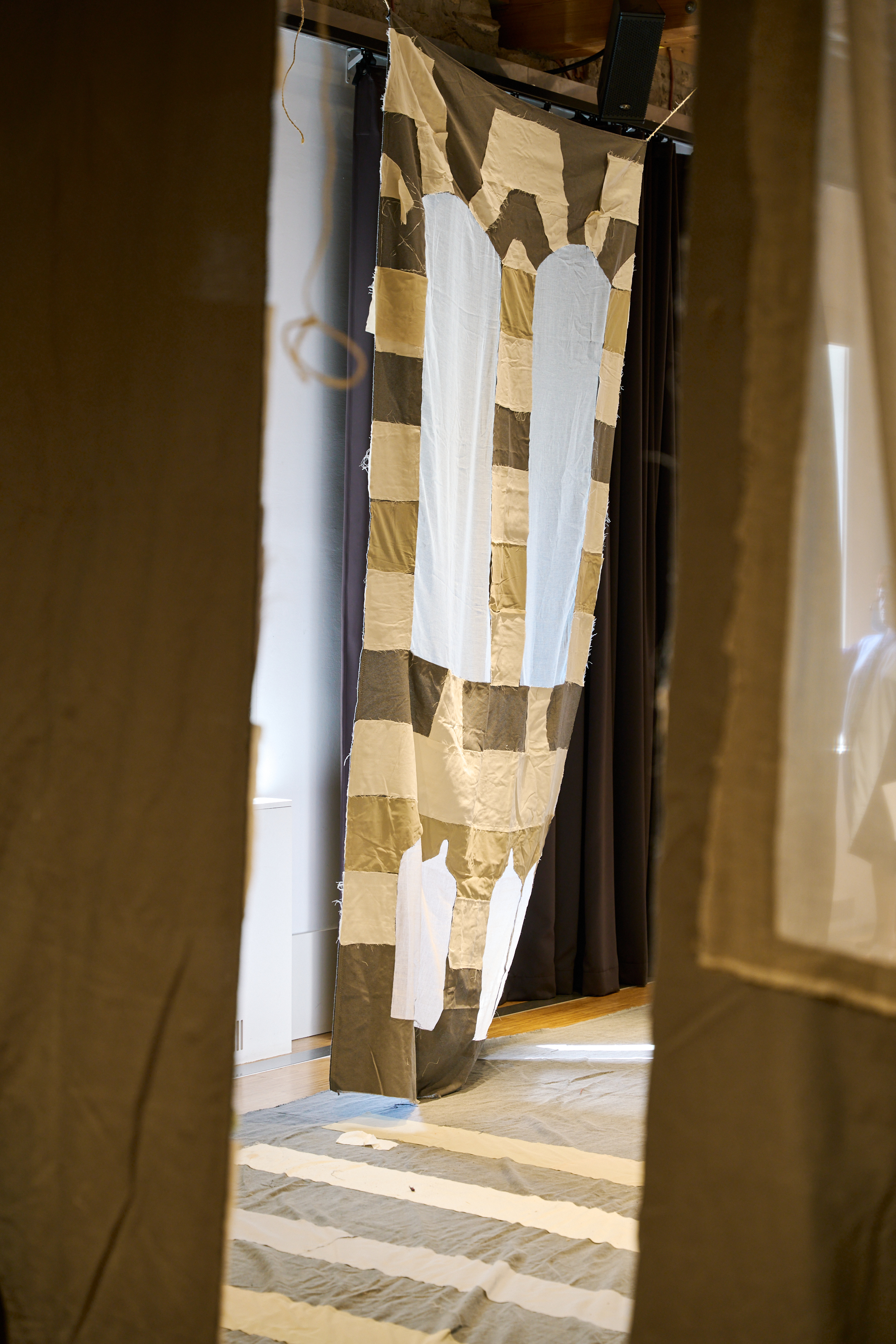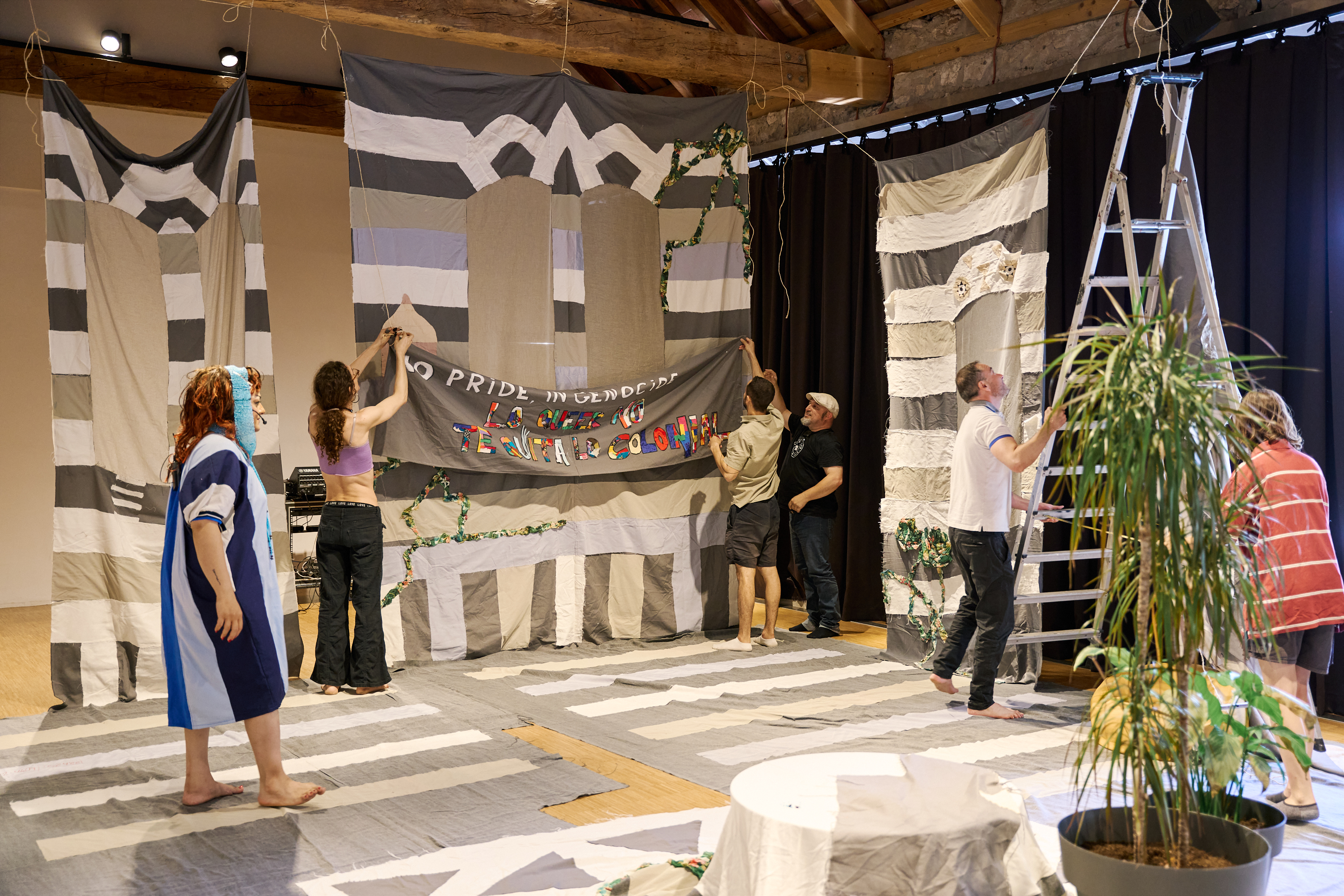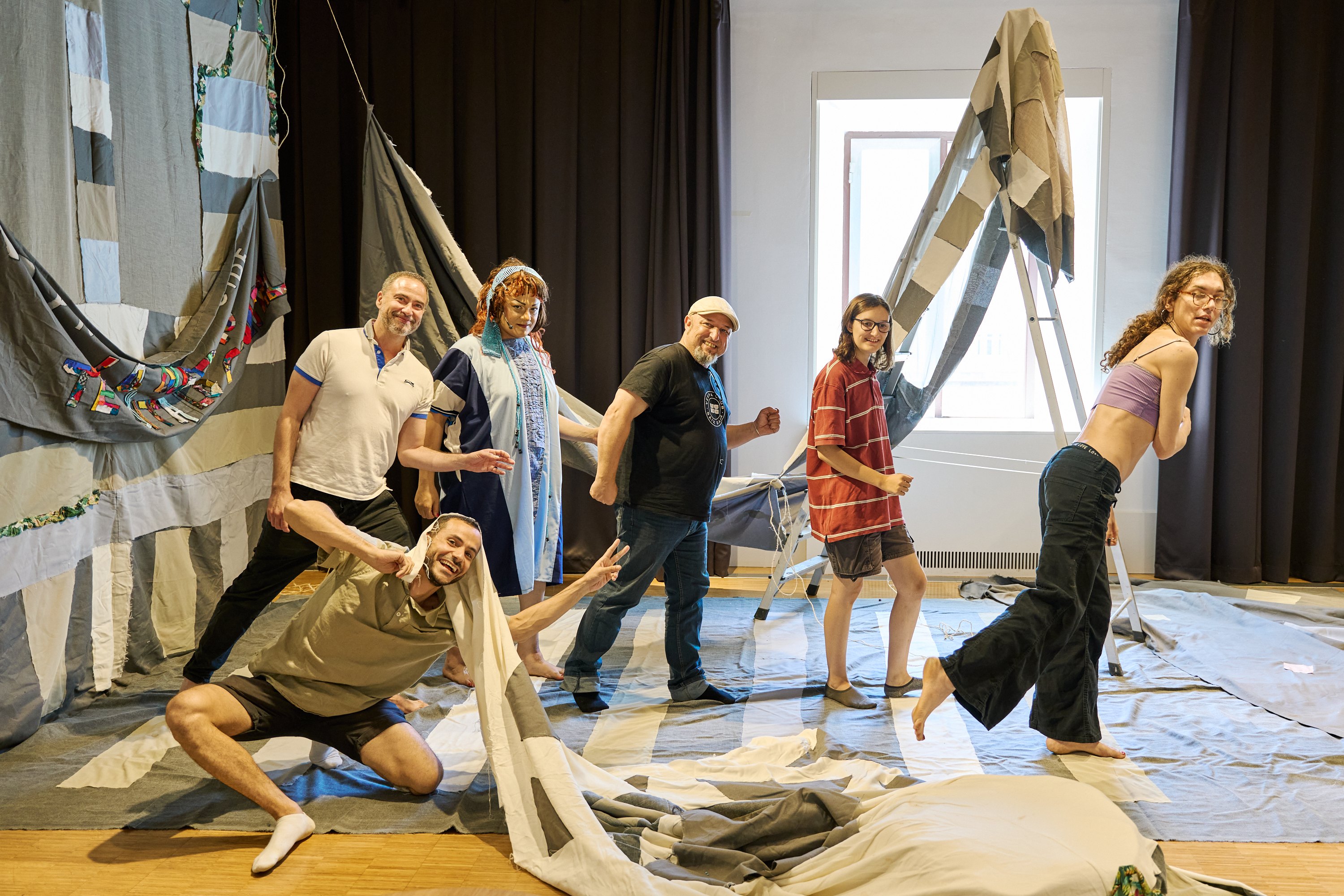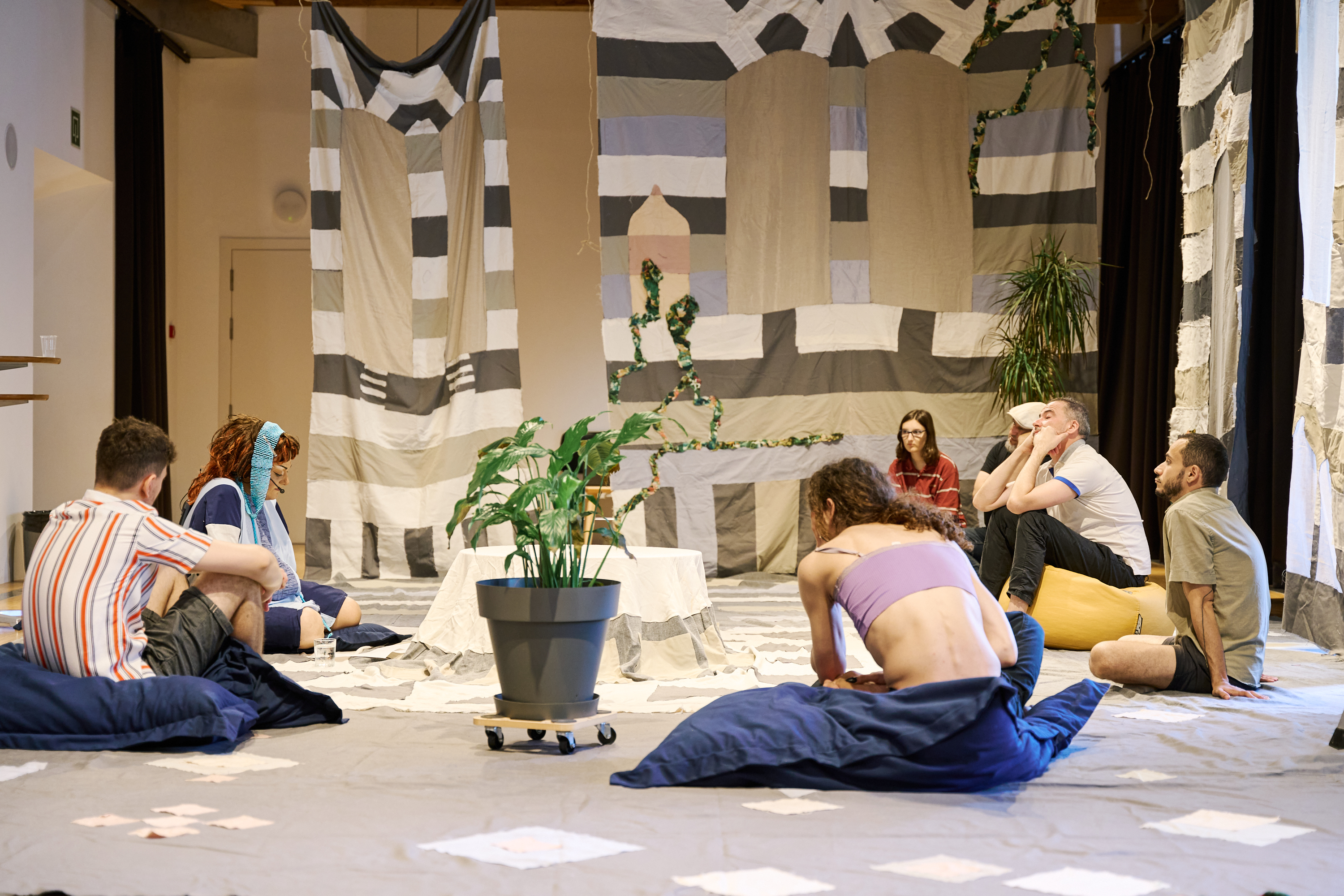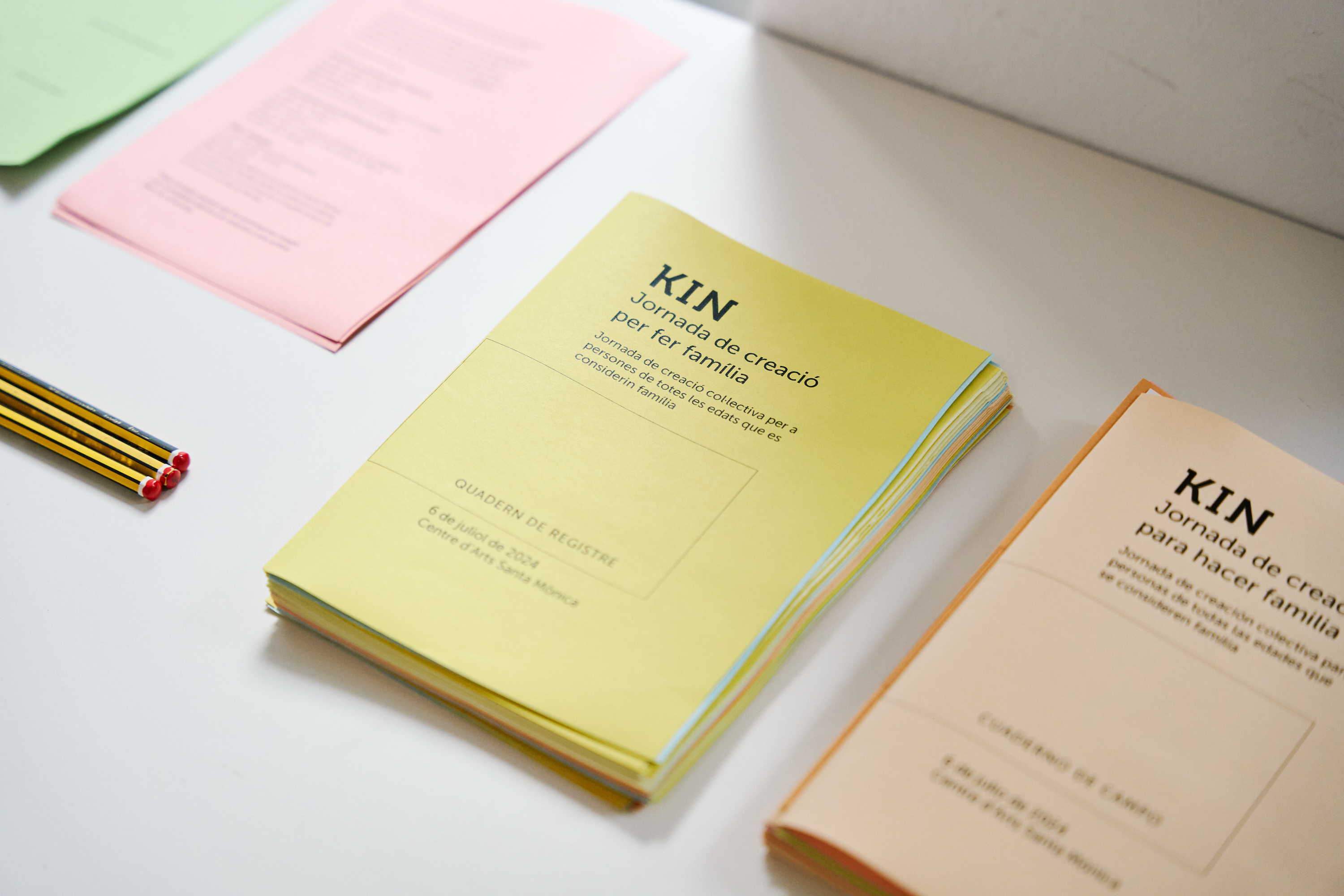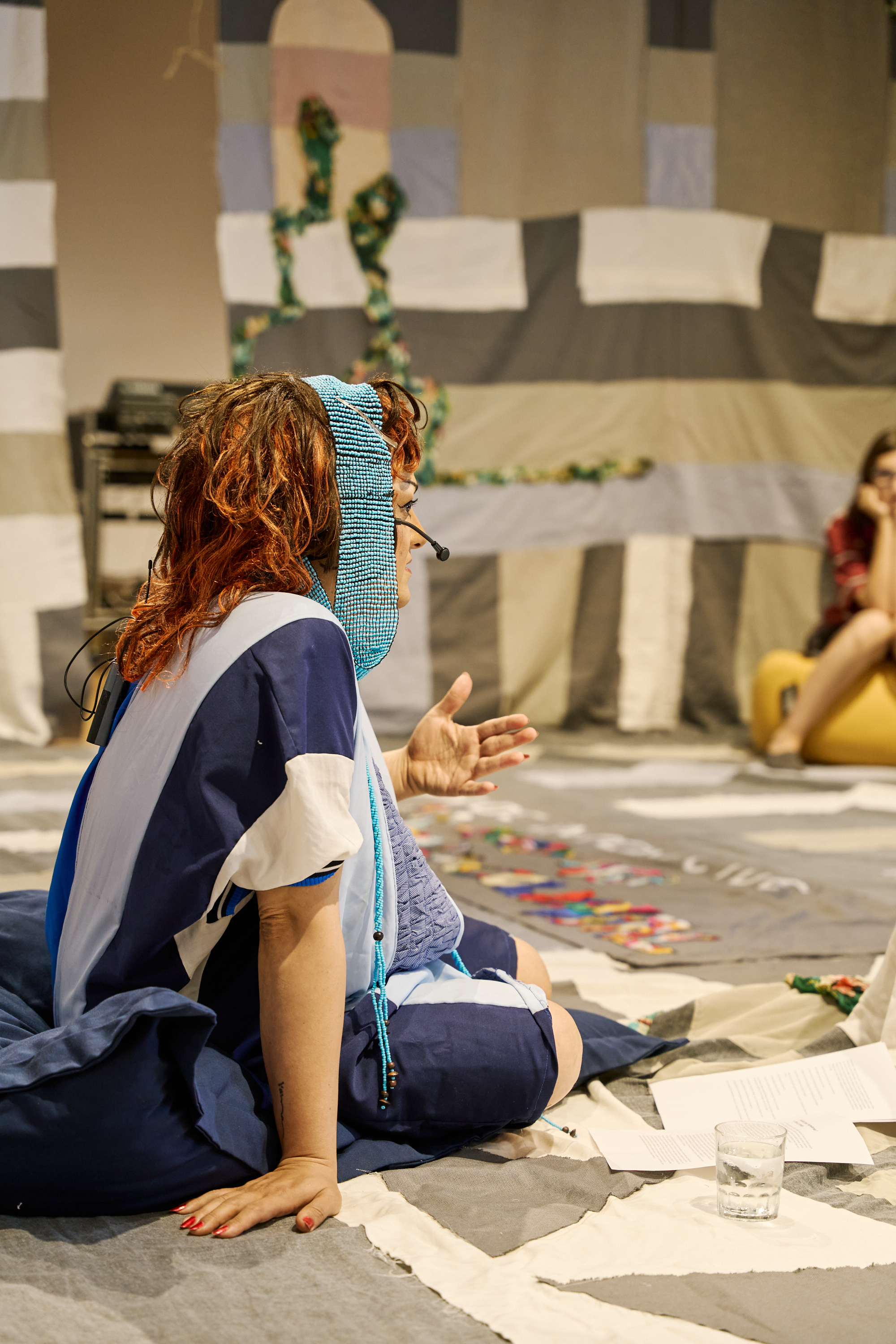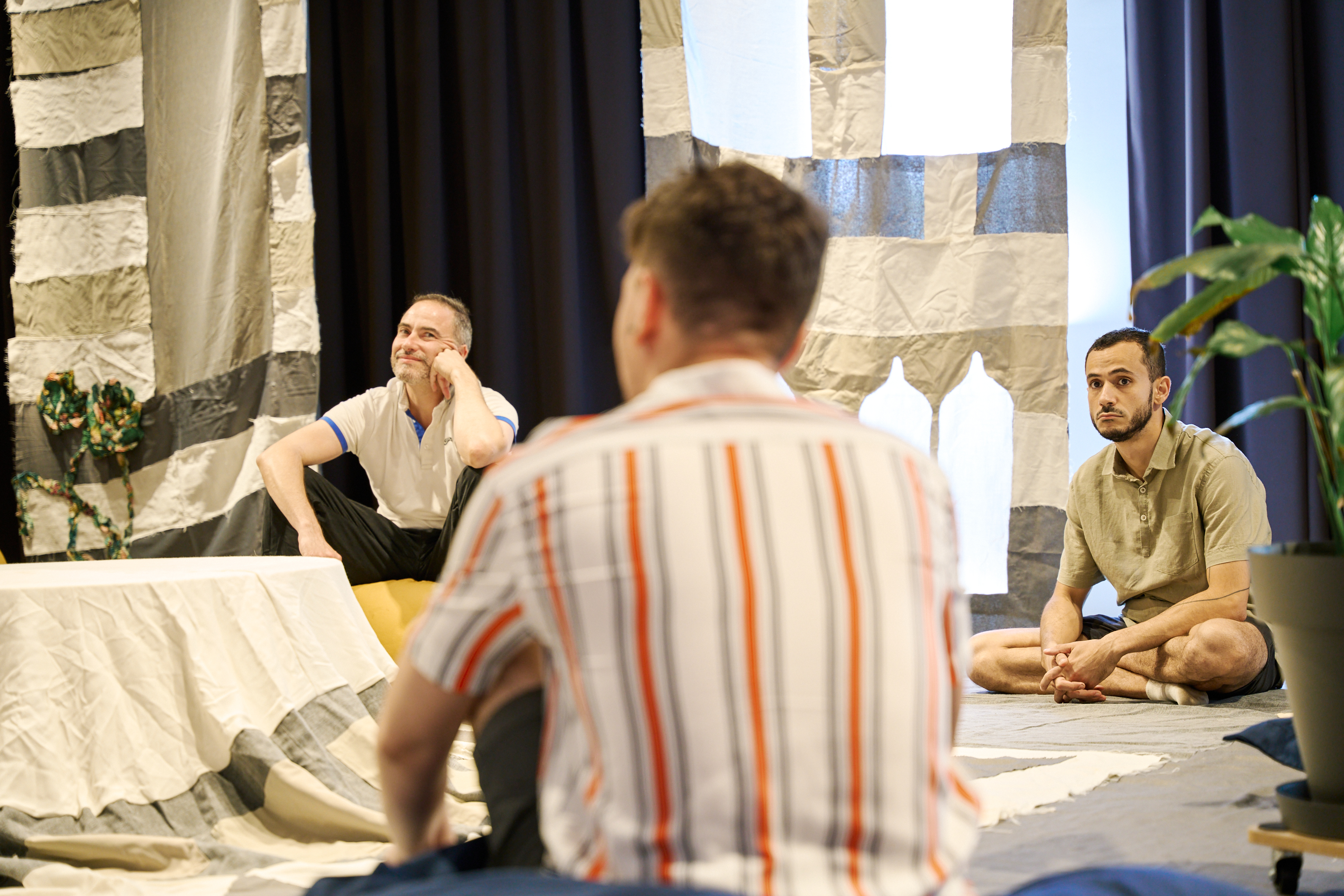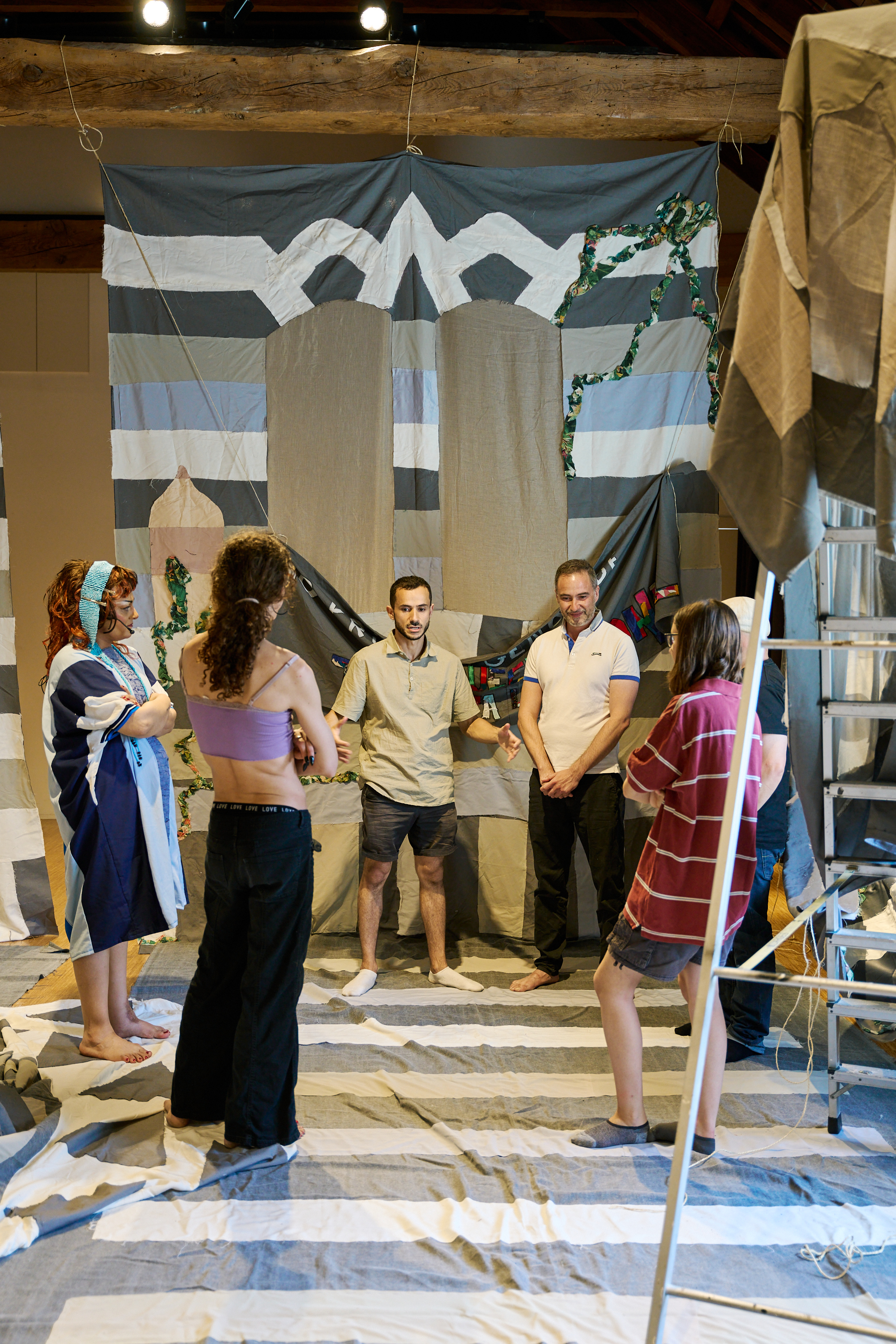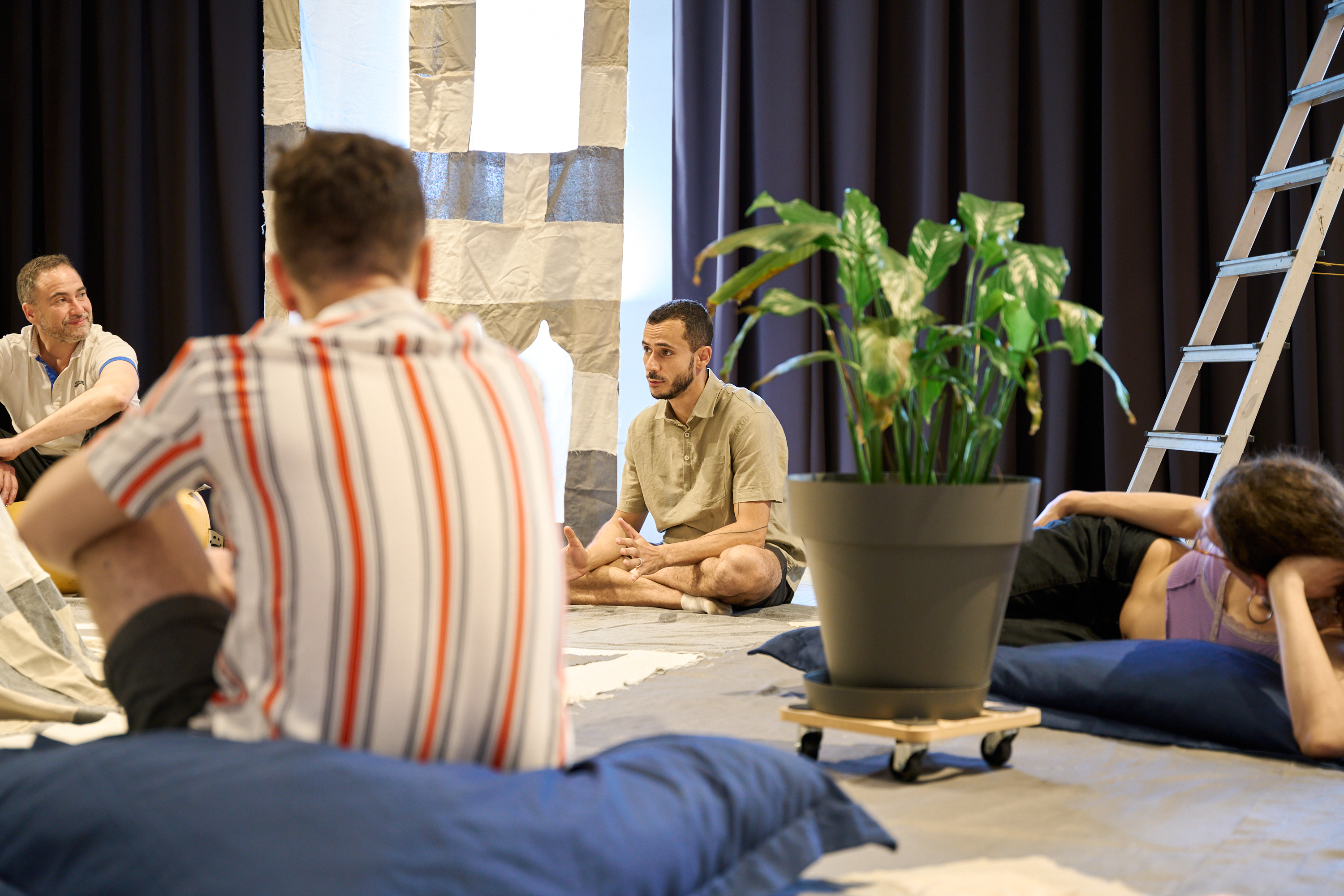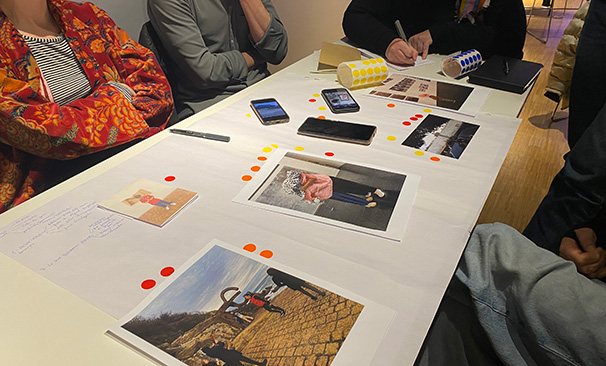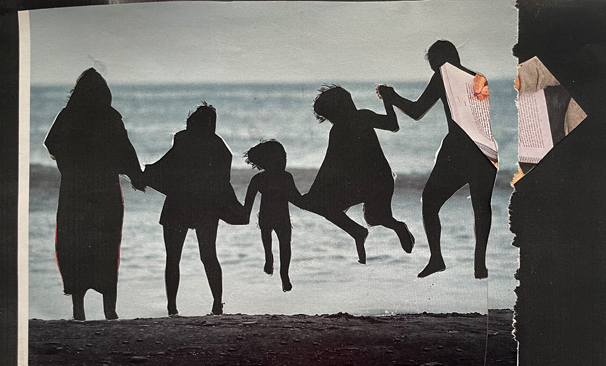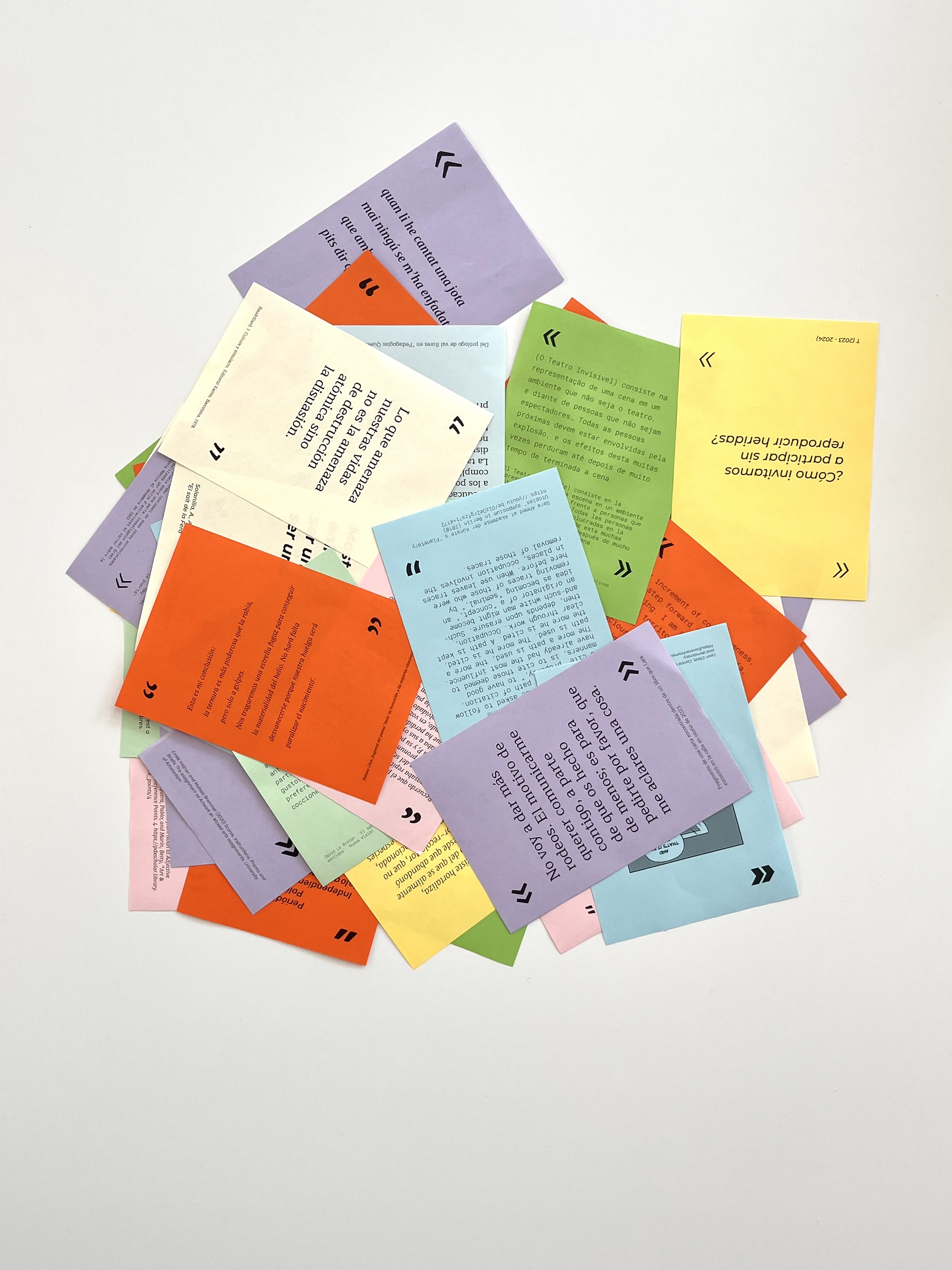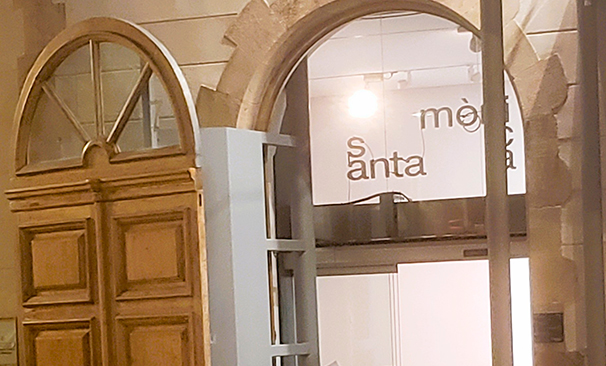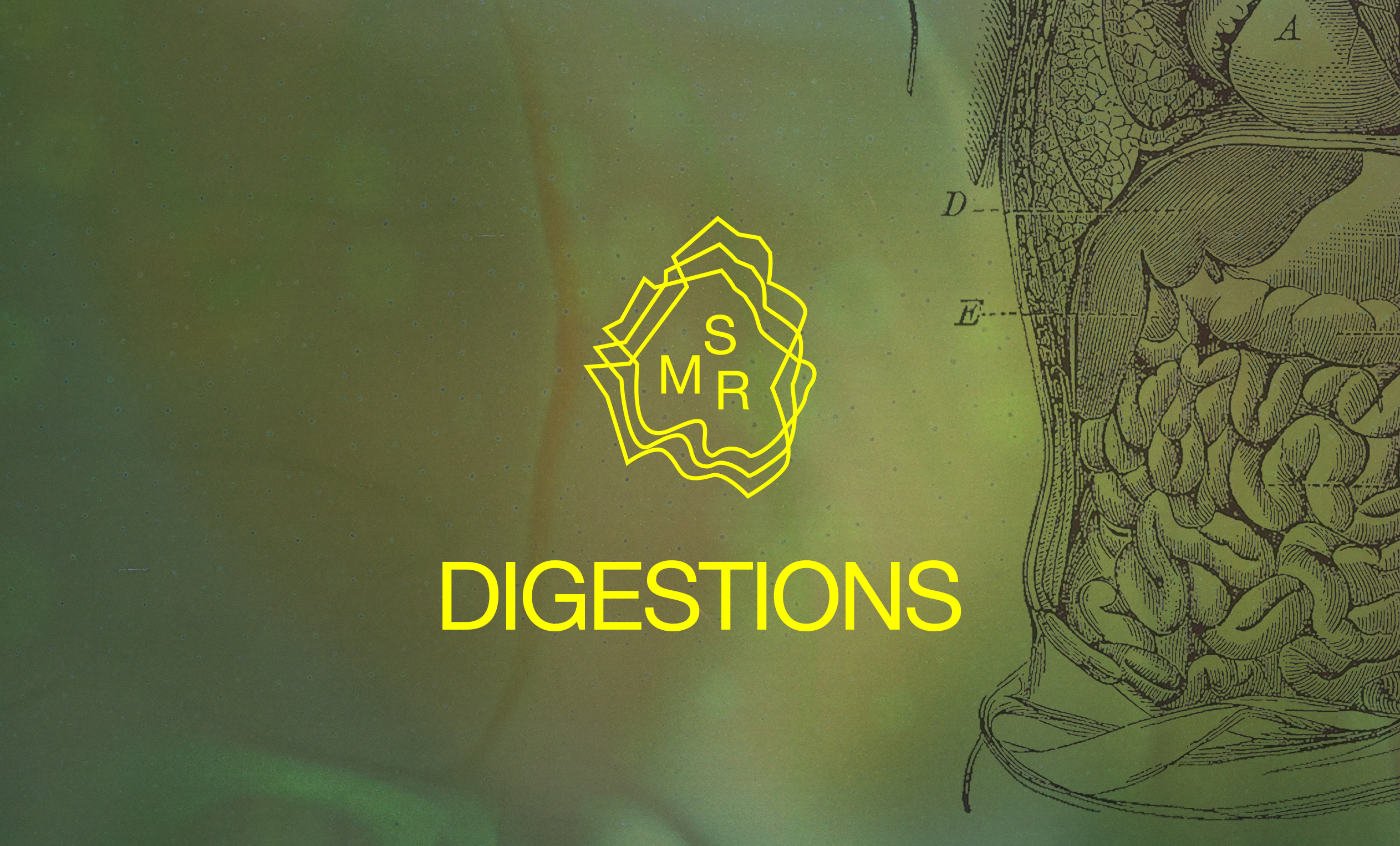What are you looking for?
You might be looking for...
KIN
A day of creation to build family
Abstract
KIN is a day made up of three consecutive workshops of approximately one hour, where family audiences are specifically invited to participate in collective creation dynamics. We understand family audiences in a broad sense and the family workshop as an opportunity to create bonds beyond genetic ties.
The day aims to implement the family workshop as an artistic action in its own right, promoting intergenerational learning, inclusion, creativity and curiosity, while at the same time fostering community building around the cultural institution.
The workshops are designed for all ages and are independent of each other, so the public can do one, two or all three.
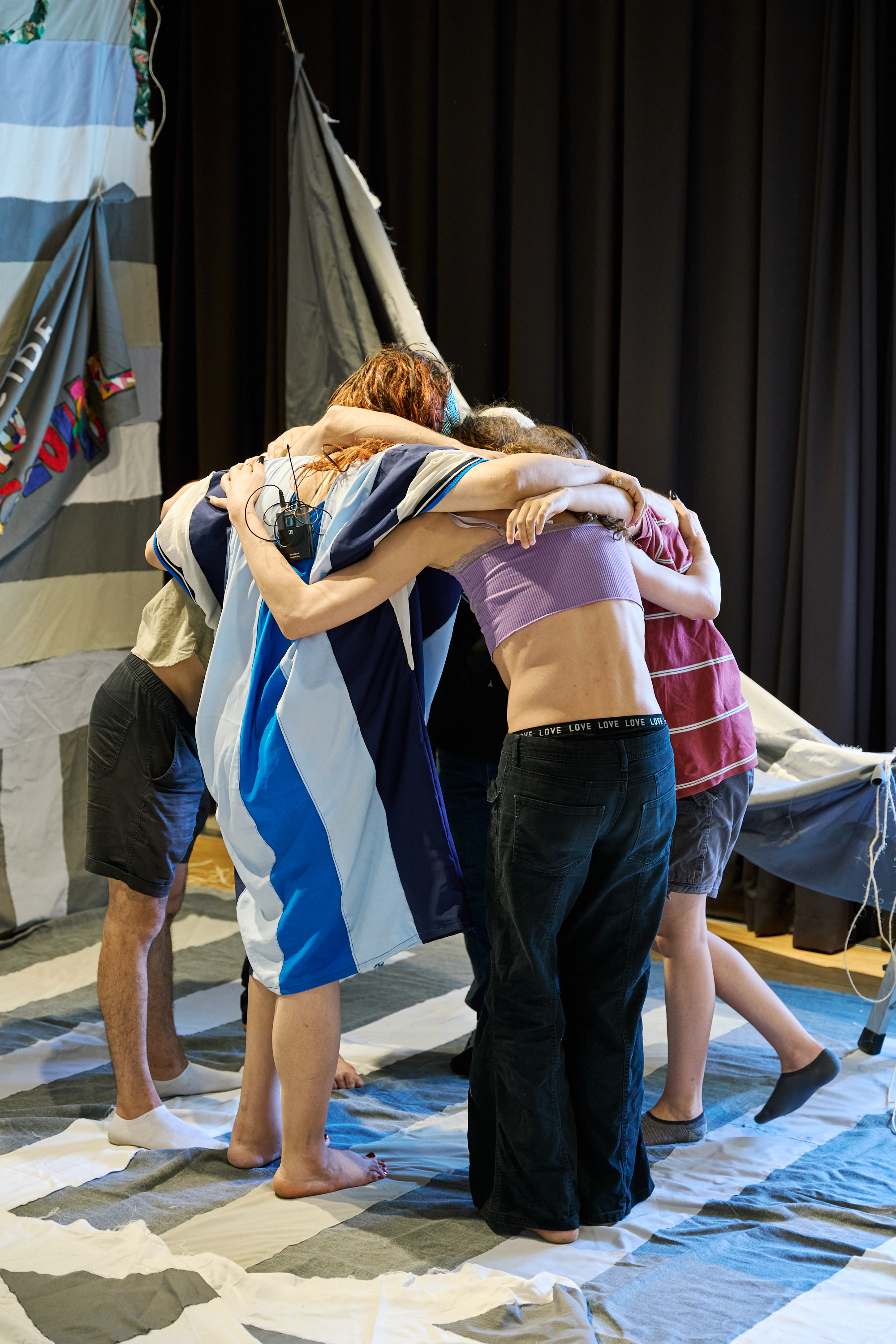
This prototype is a practical application of the instructions for use that we have compiled throughout our research and which are included in the prototype Family Workshop Instructions Manifesto, as well as a way of exploring new spaces for family participation in the Santa Mònica.
BACKGROUND
- A working group.
- Contact with artists and workshop participants.
- An art centre, institution or space hosting the activity.
- Consumables.
- The prototype Family Workshop Instructions Manifesto.
INGREDIENTS
1. Organise a working session around the prototype Family Workshop Instructions Manifesto.
2. Search for and select artists whose practices fit with what you have worked on in the first step. When you make contact, make sure you are clear about your materials and technical needs.
3. Formulate a first sketch of the day's format, according to timetables, spaces and practices.
4. Hold a meeting with the technical team of the centre where the event will be held.
5. Prepare a pedagogical dossier including explanatory information about the day's purpose, practical information about the workshops and research questions.
6. Spread the word about the event. Take into account the need to adapt different communication strategies according to the social groups you want to appeal to.
7. Hold the event.
STEPS
To select artists and workshop participants, we recommend finding artistic practices that can potentially generate new family relationships and that offer different views and points of view.
Artists are invited to share their practice, keeping in mind that the focus is on the relational element. Emphasis is placed on seeking out those artistic practices that are most invisible and have the most difficulty in finding a space in museum contexts. At the same time, these artists can draw a potential audience that does not normally visit museums. It is therefore interesting to assess what social impact the artist's practice has and which social groups may be interested in the practices on offer.
On the other hand, the configuration of the whole day must take into account the total experience of the users as well as the limits of the institution. Different models are possible: running the workshops simultaneously or offering them as a complete pack, or even the scheduling of workshops at non-conventional times.
Other issues to consider when setting up a KIN day include the following: provide areas to consult theoretical material; provide a notebook to assess the workshops; match the workshop schedules with the potential audience we want to attract; provide care and rest areas; include food and beverages; take care of the relationship with the artist and offer them the necessary space to prepare for and reflect on the workshop, as well as a decent fee; open up experimental communication strategies to get information to those who do not normally receive it, and look for a time- and space-challenging format for the day.
RECOMMENDATIONS AND ADVICE
Materialisations
Education Guild Prototype 23-24
Rosa Llop, Martí de la Malla and Sara Manubens
* This recipe is based on documentation of the entire process. For more details, contact us at santamonica@gencat.cat.
